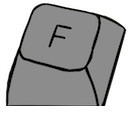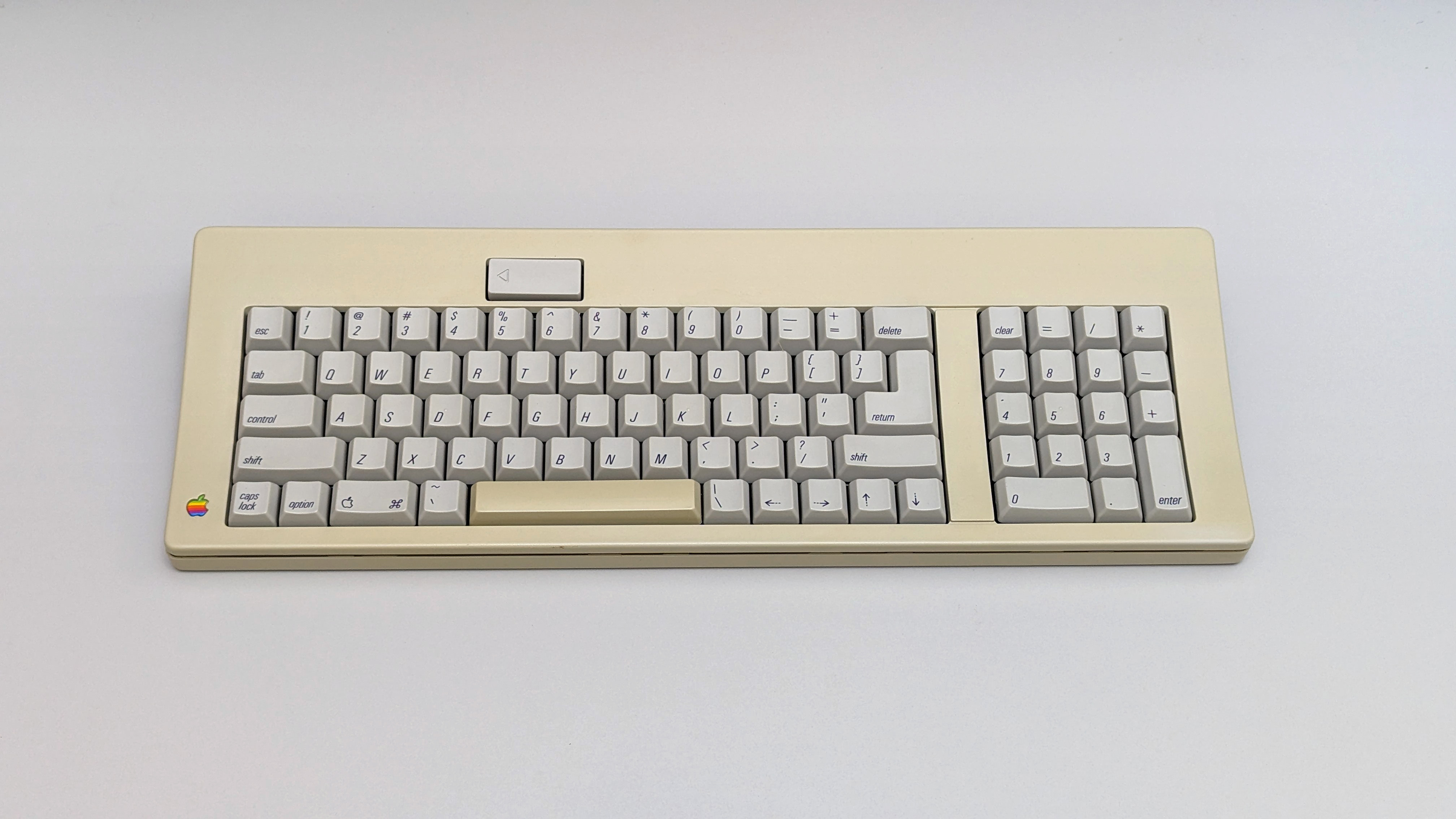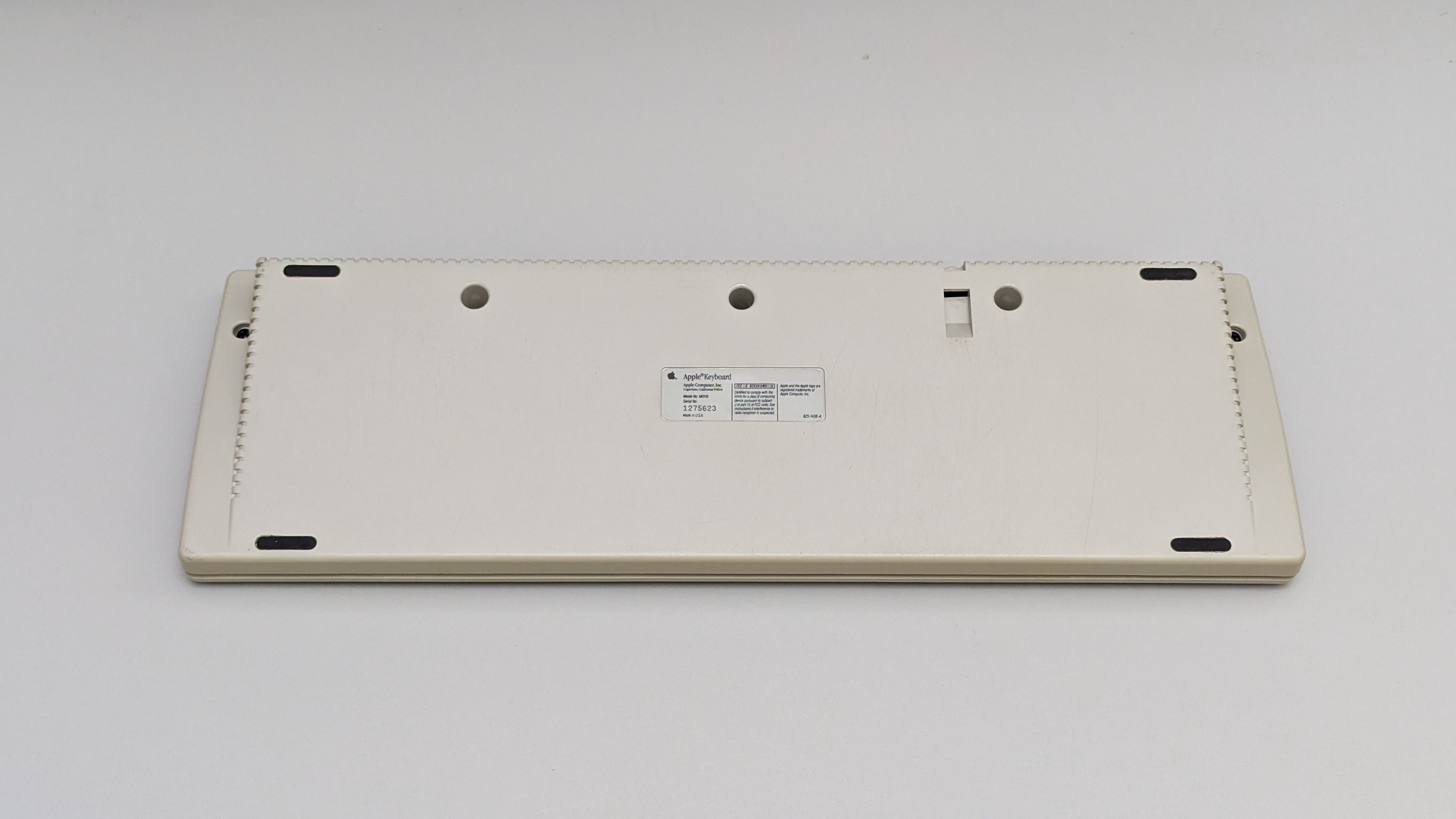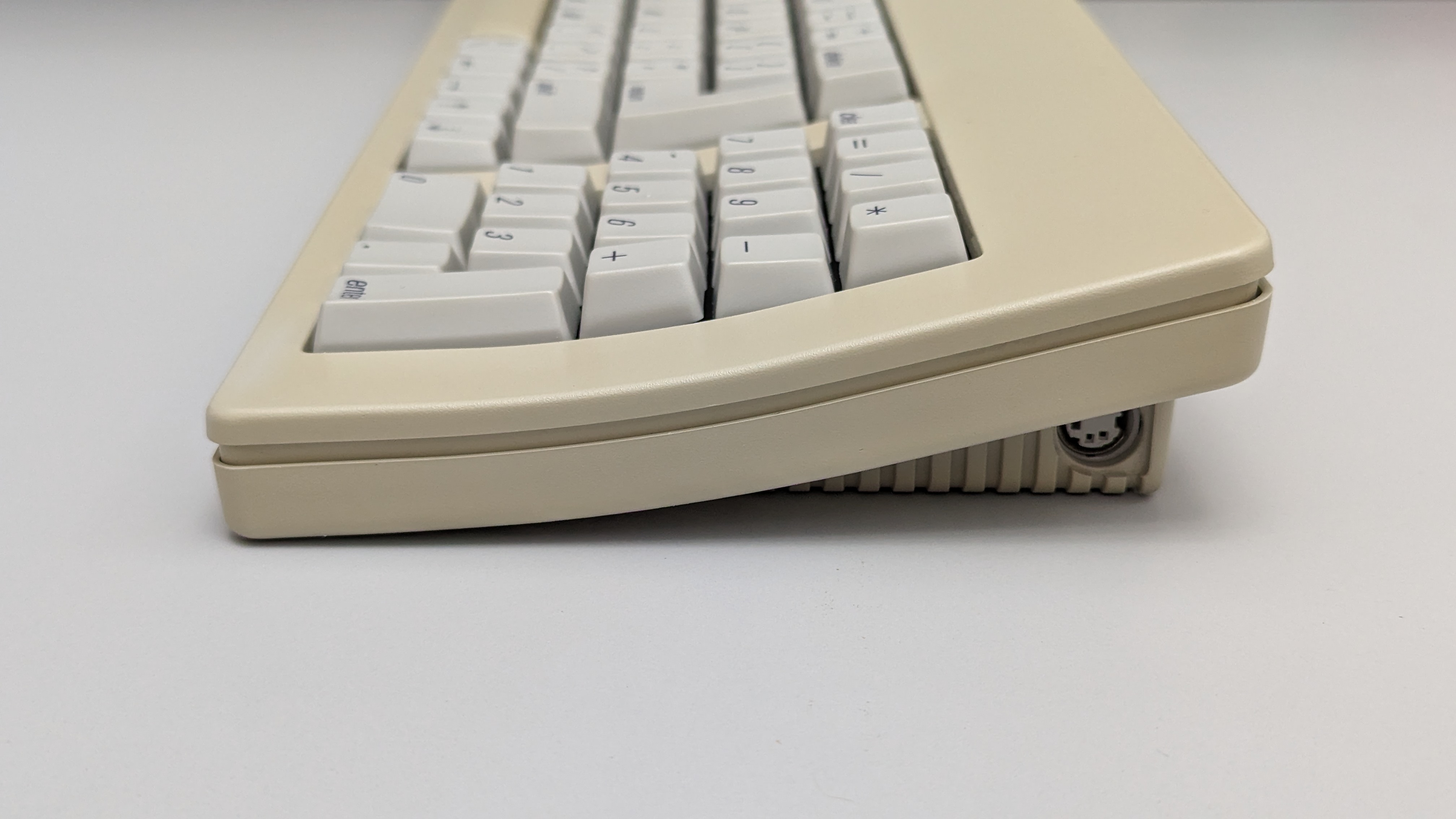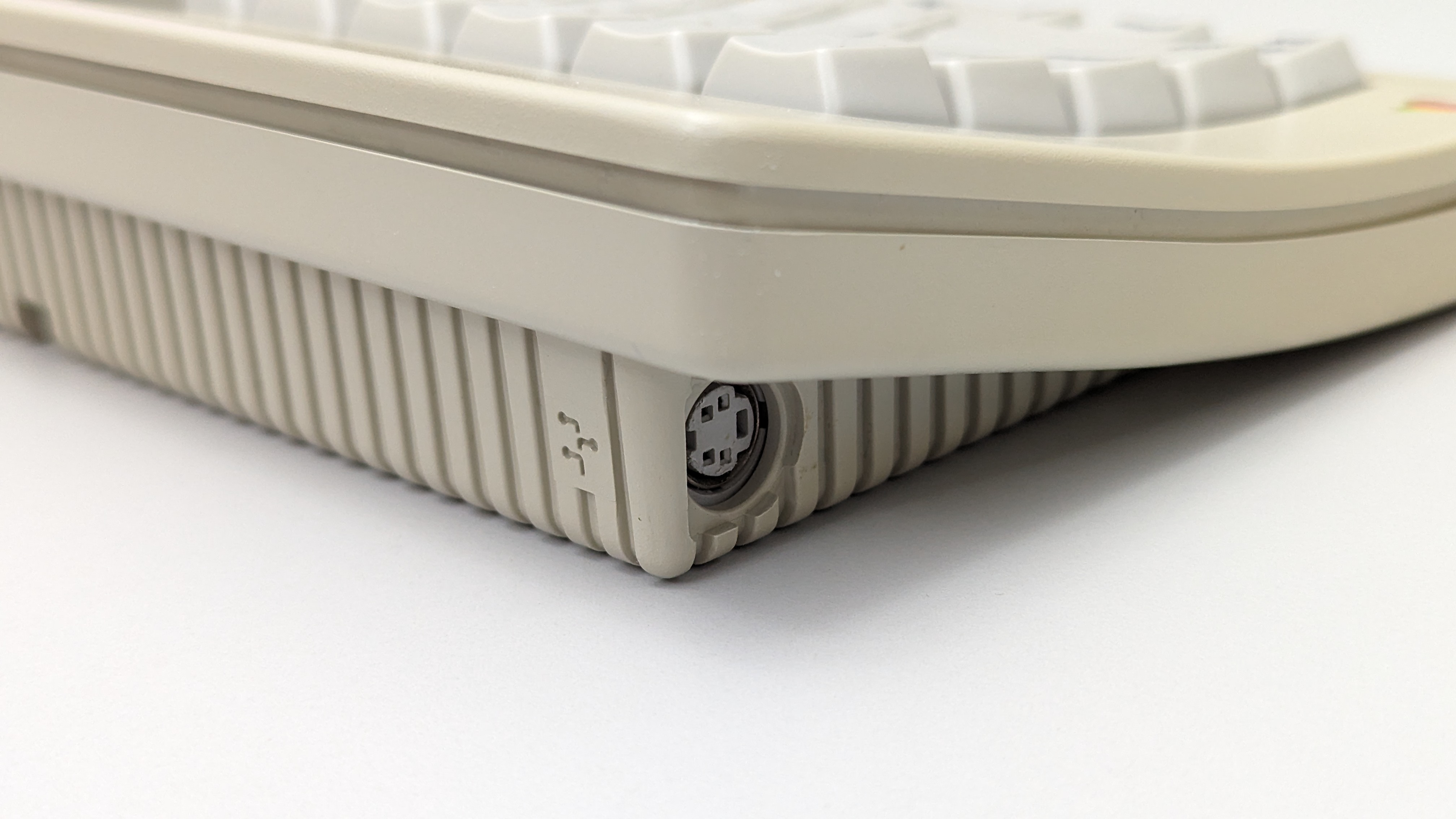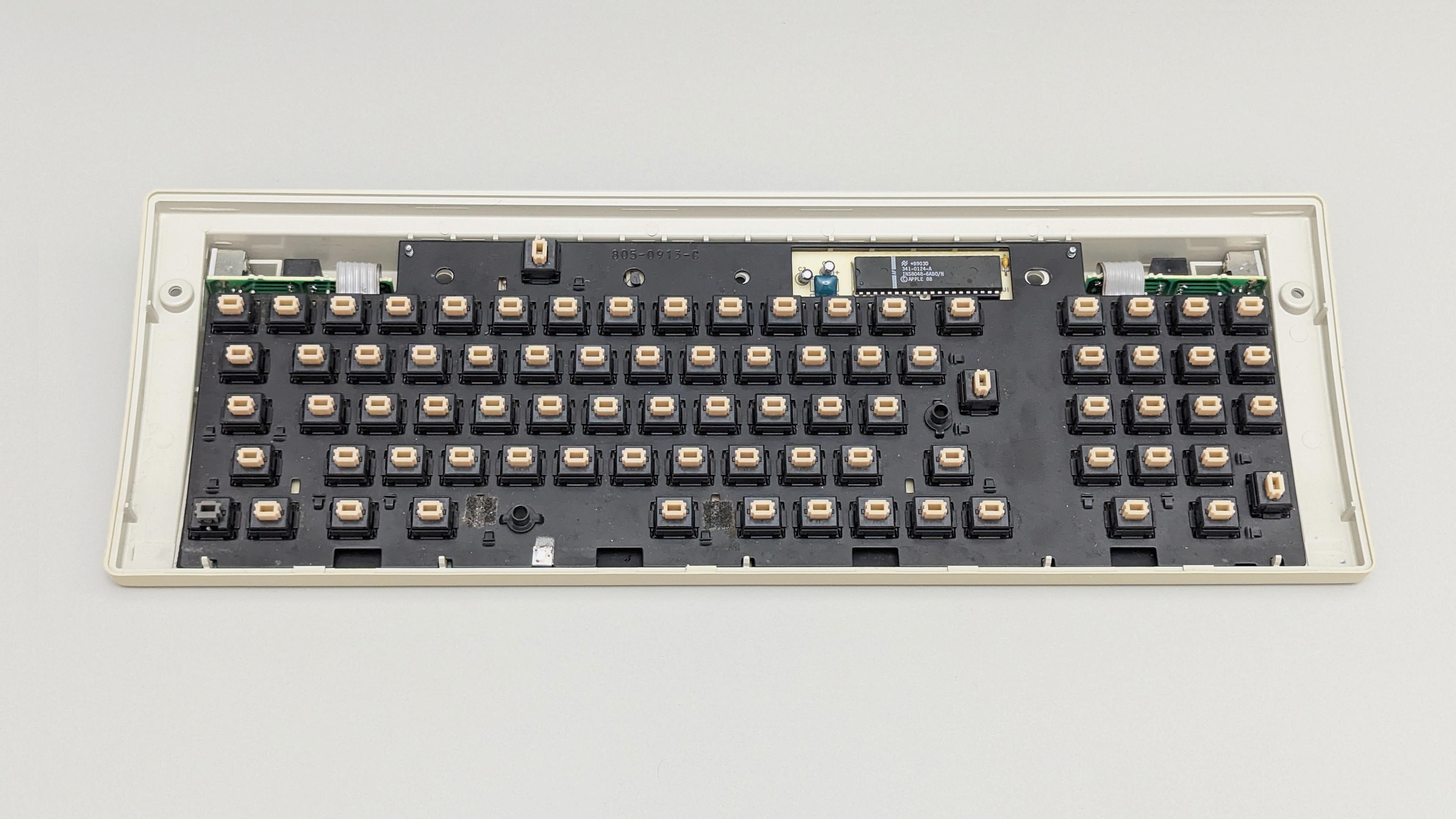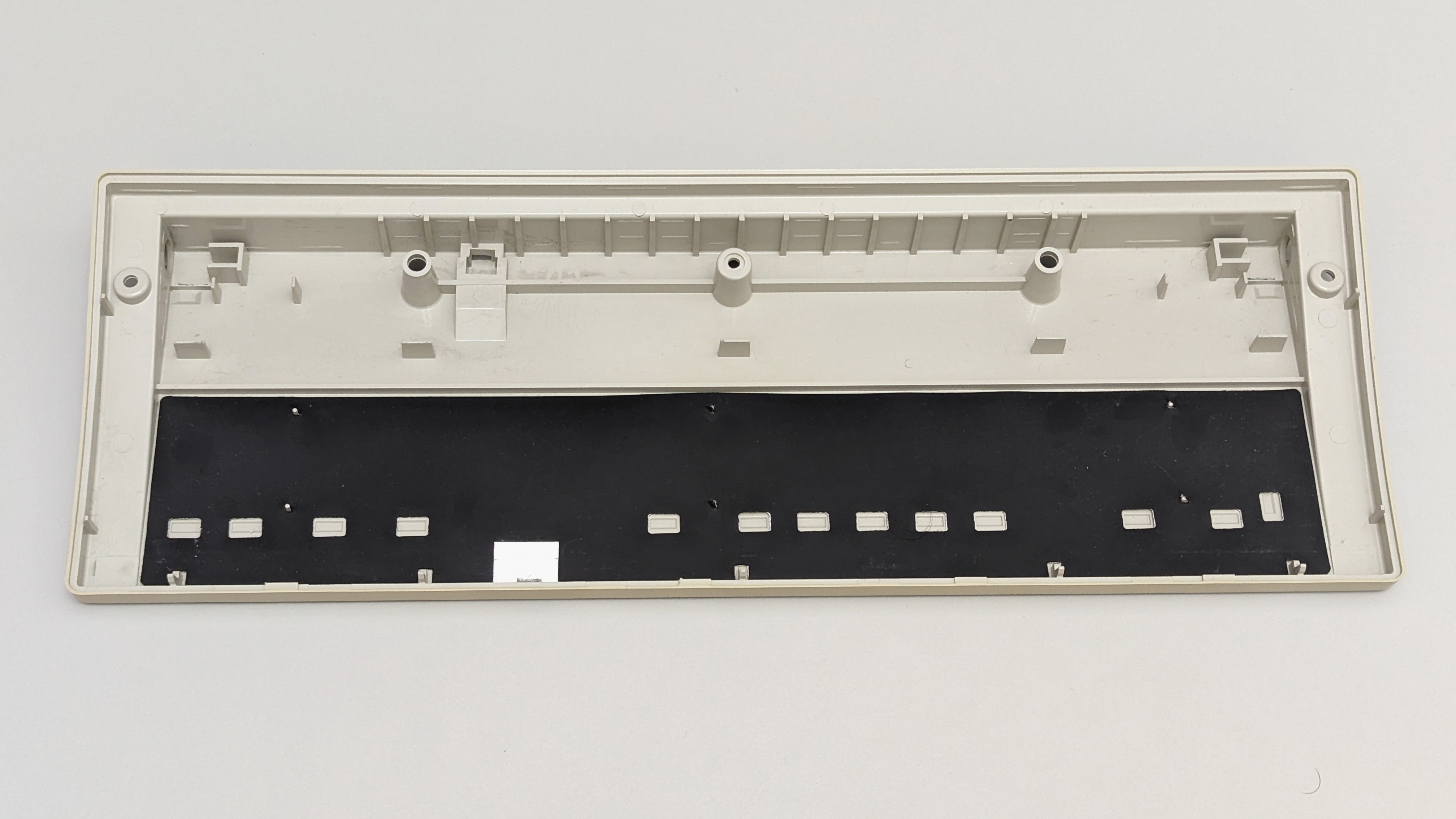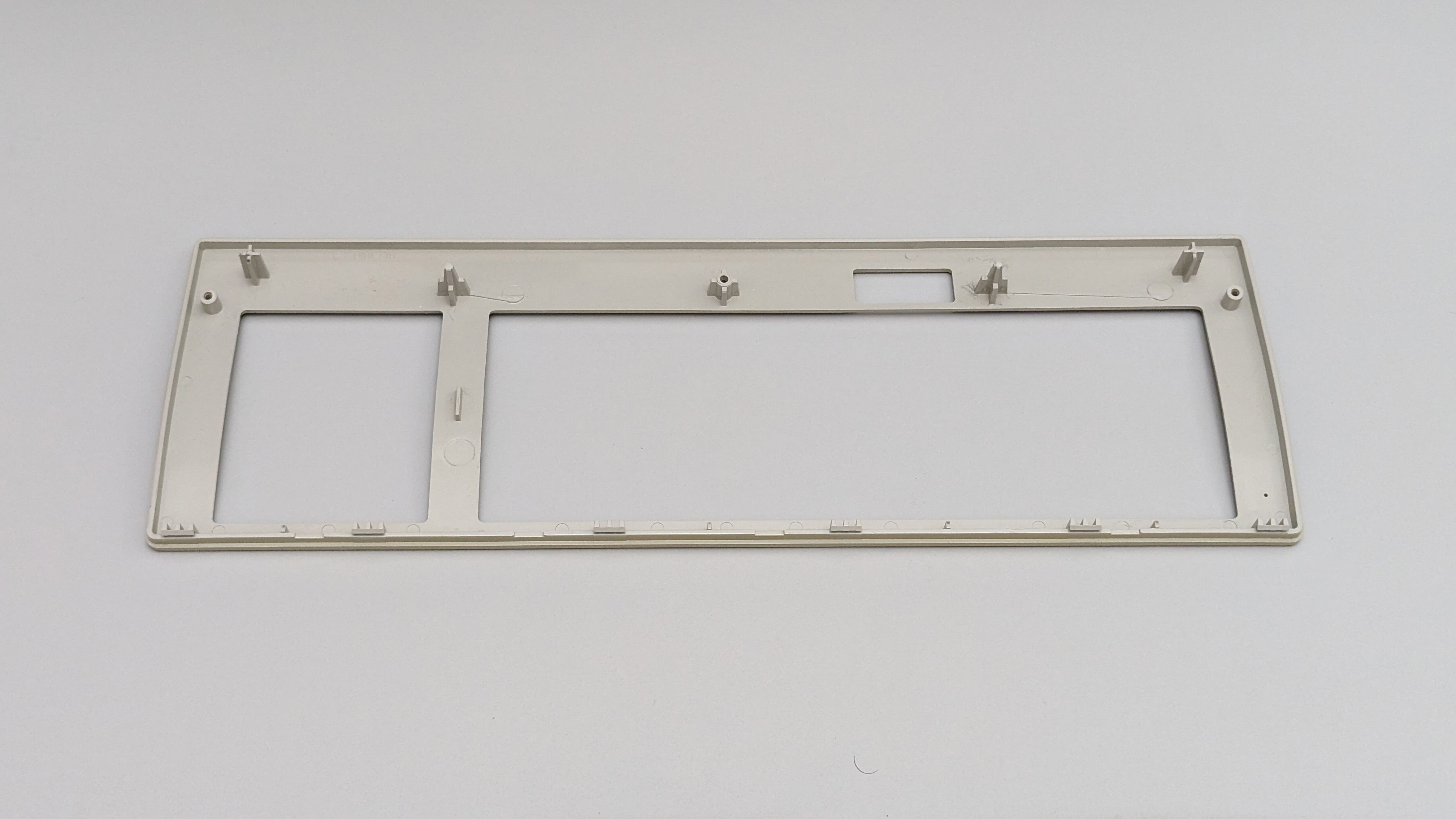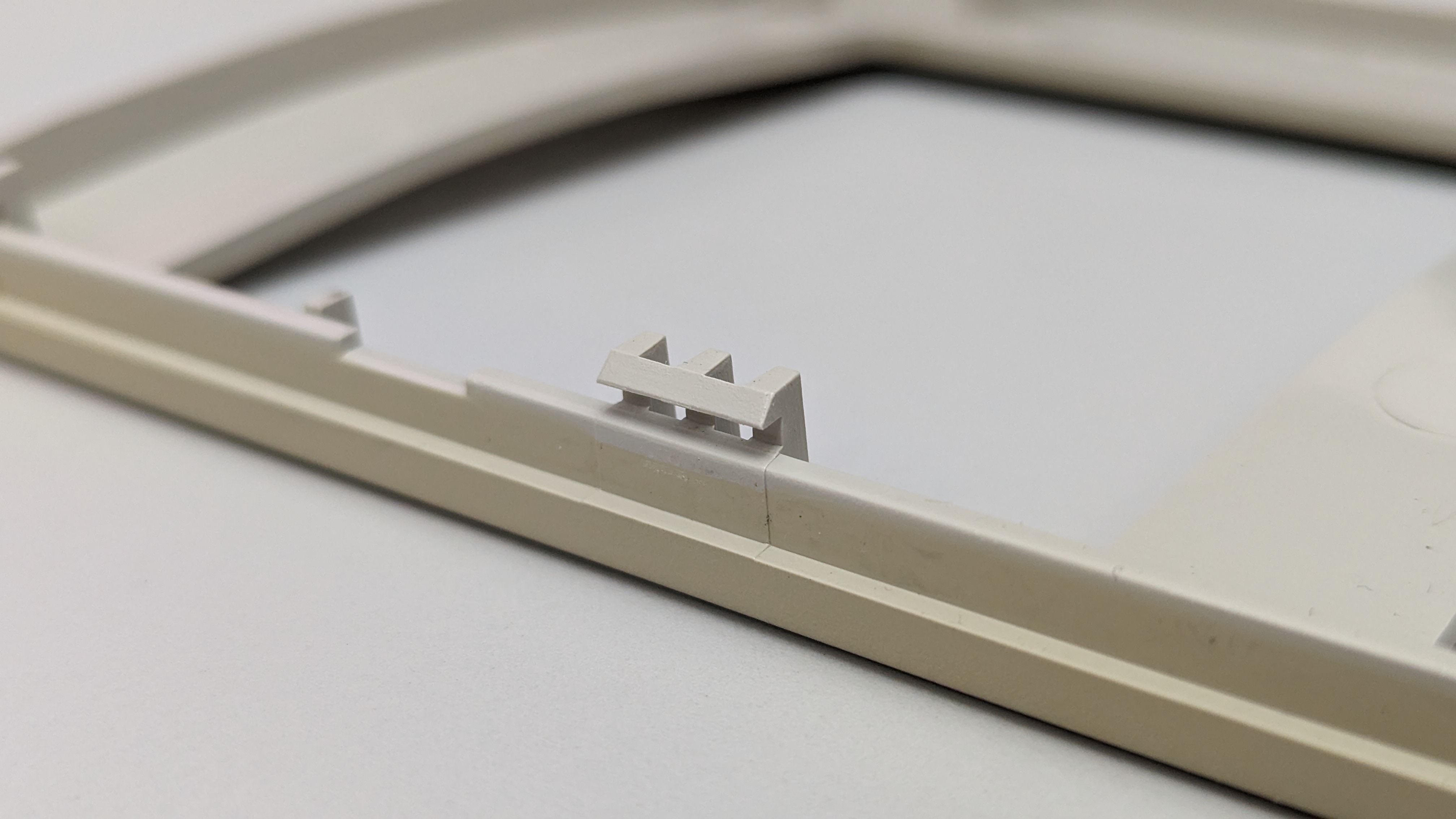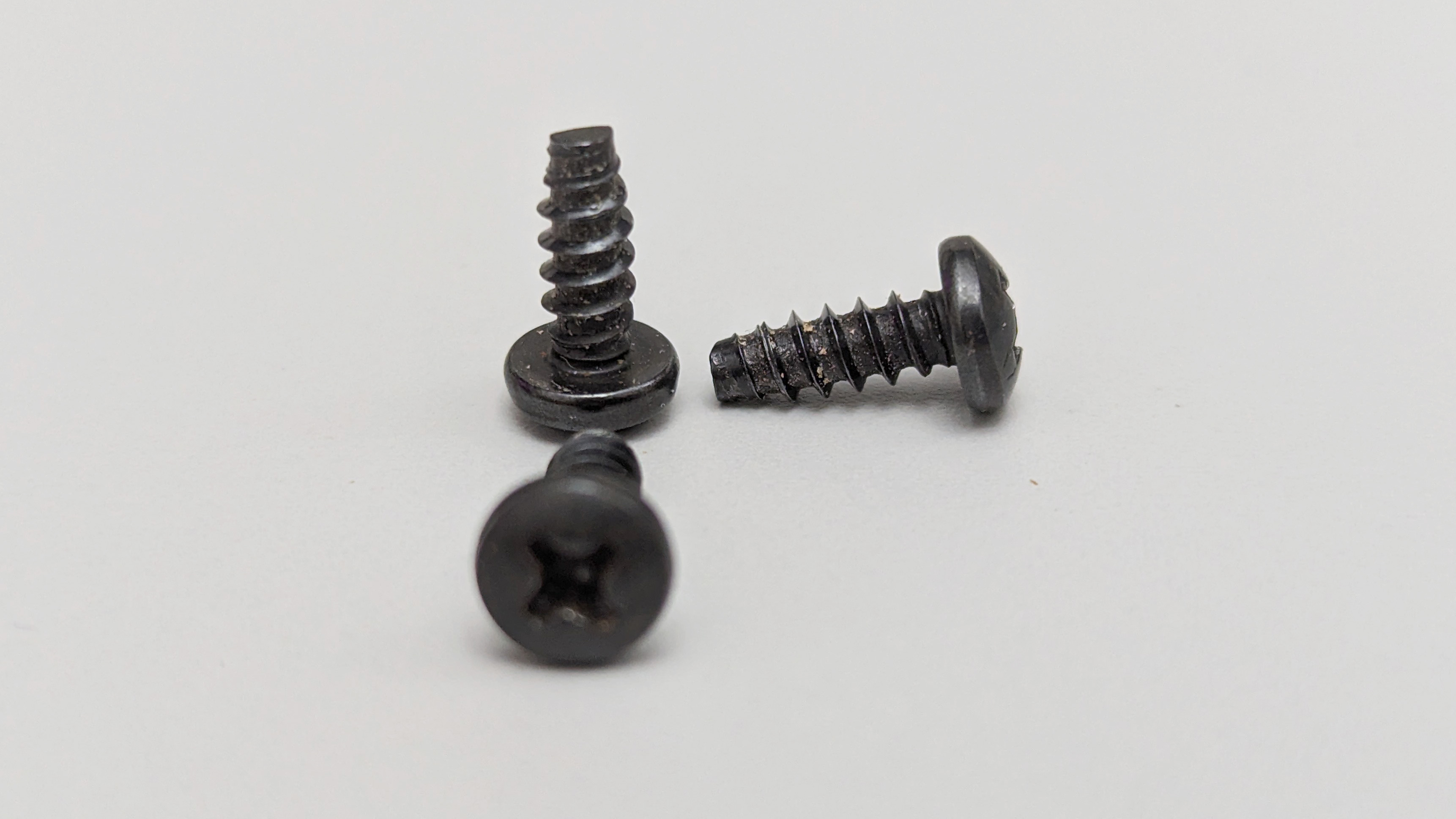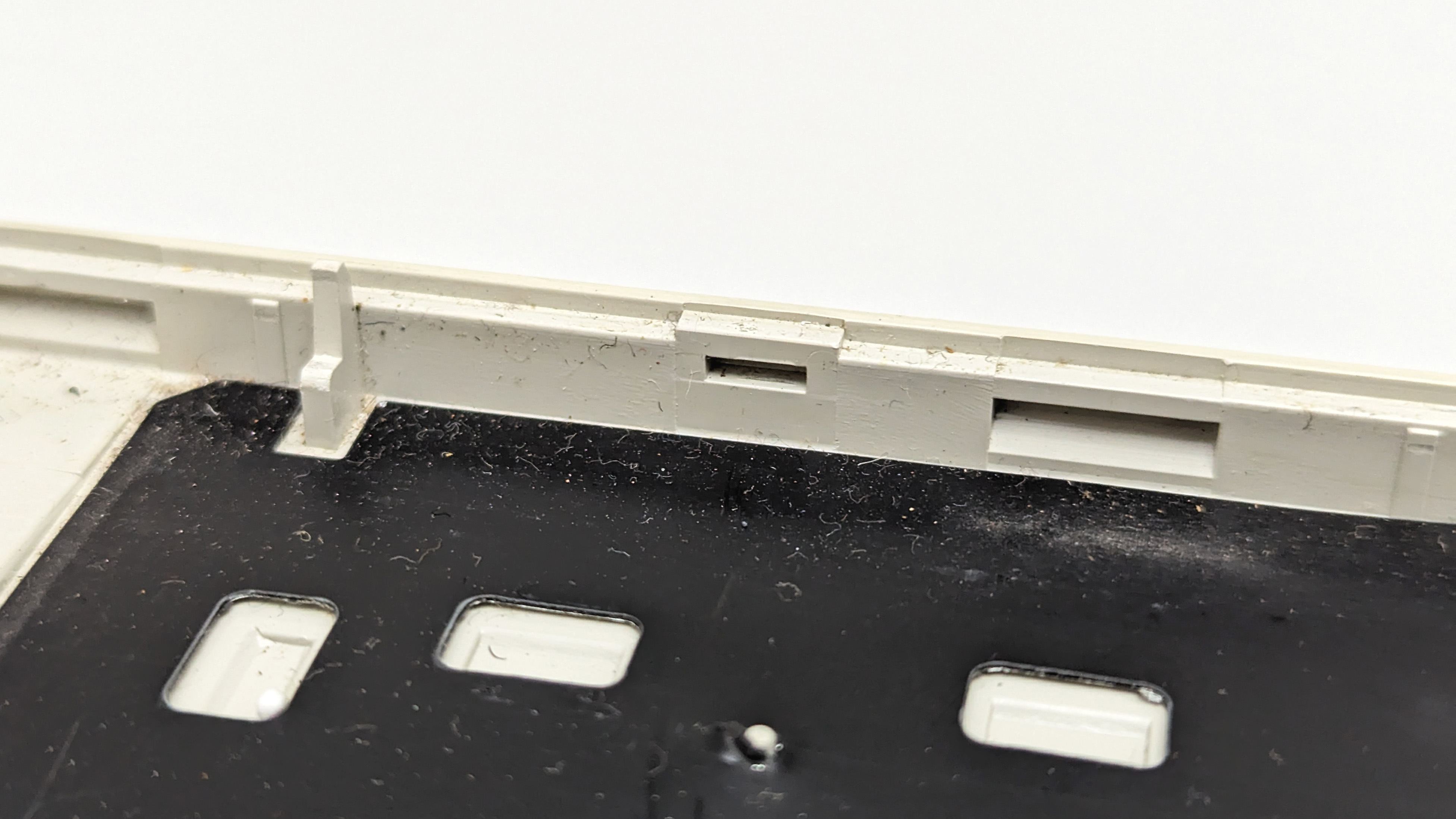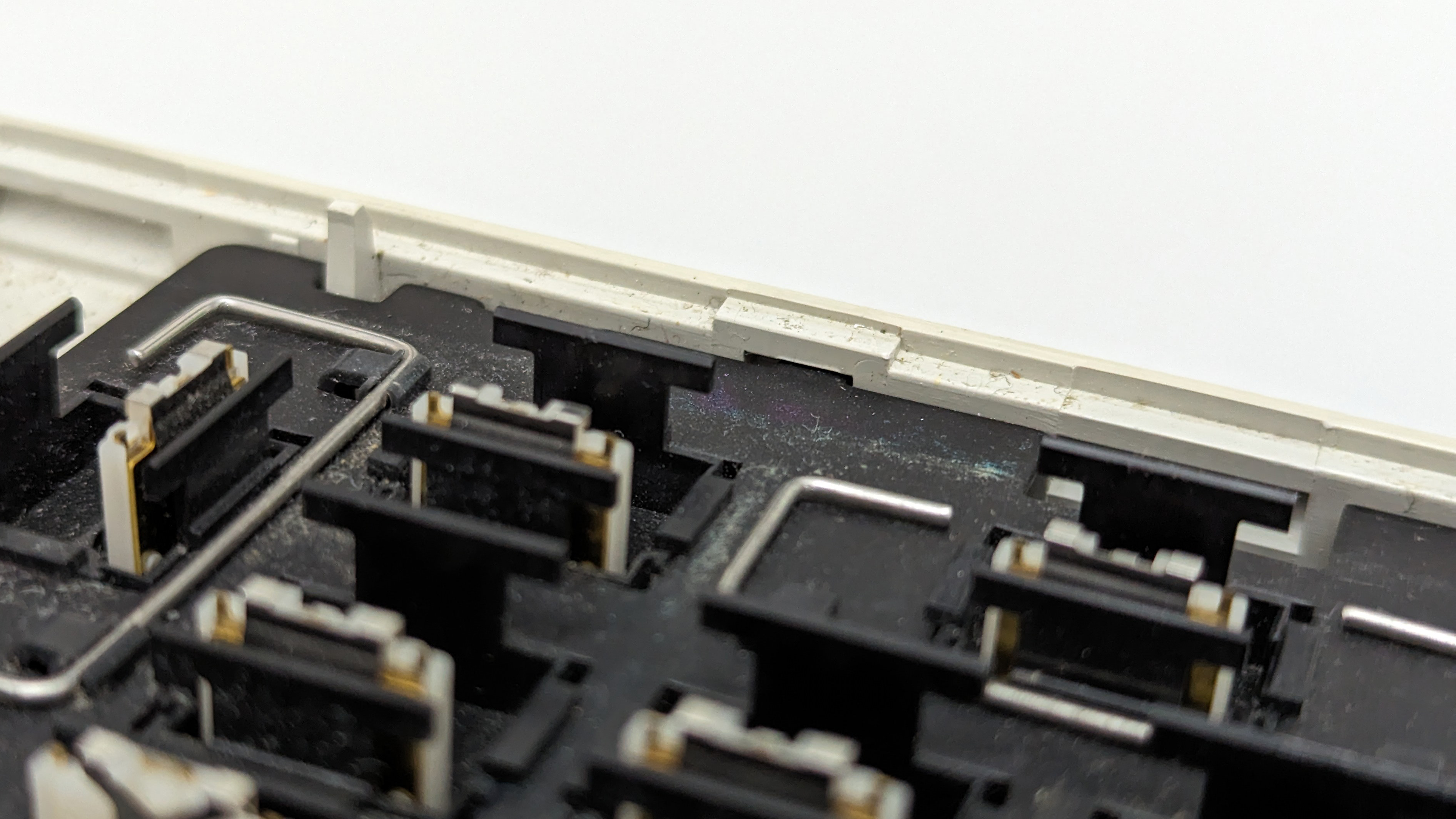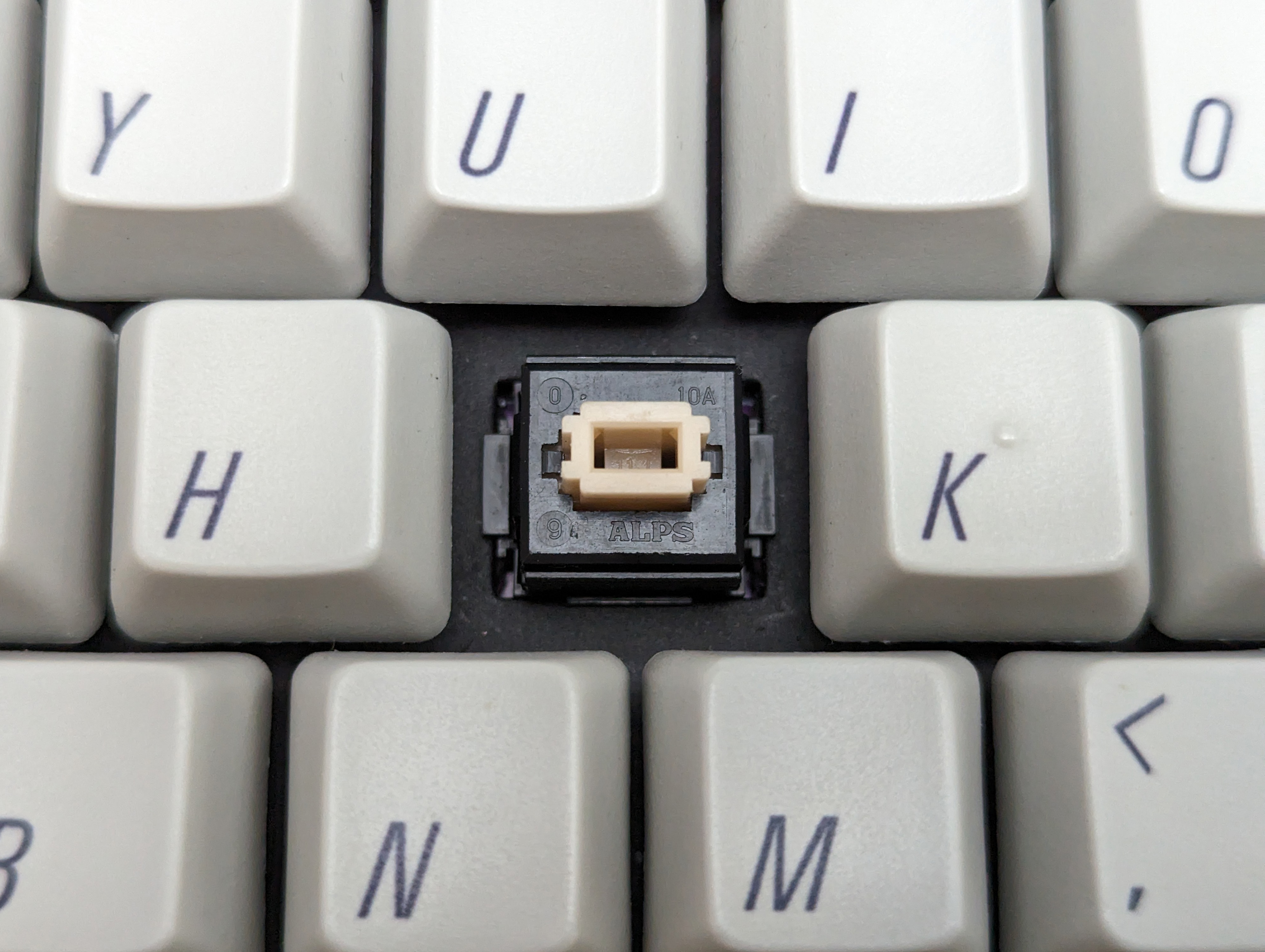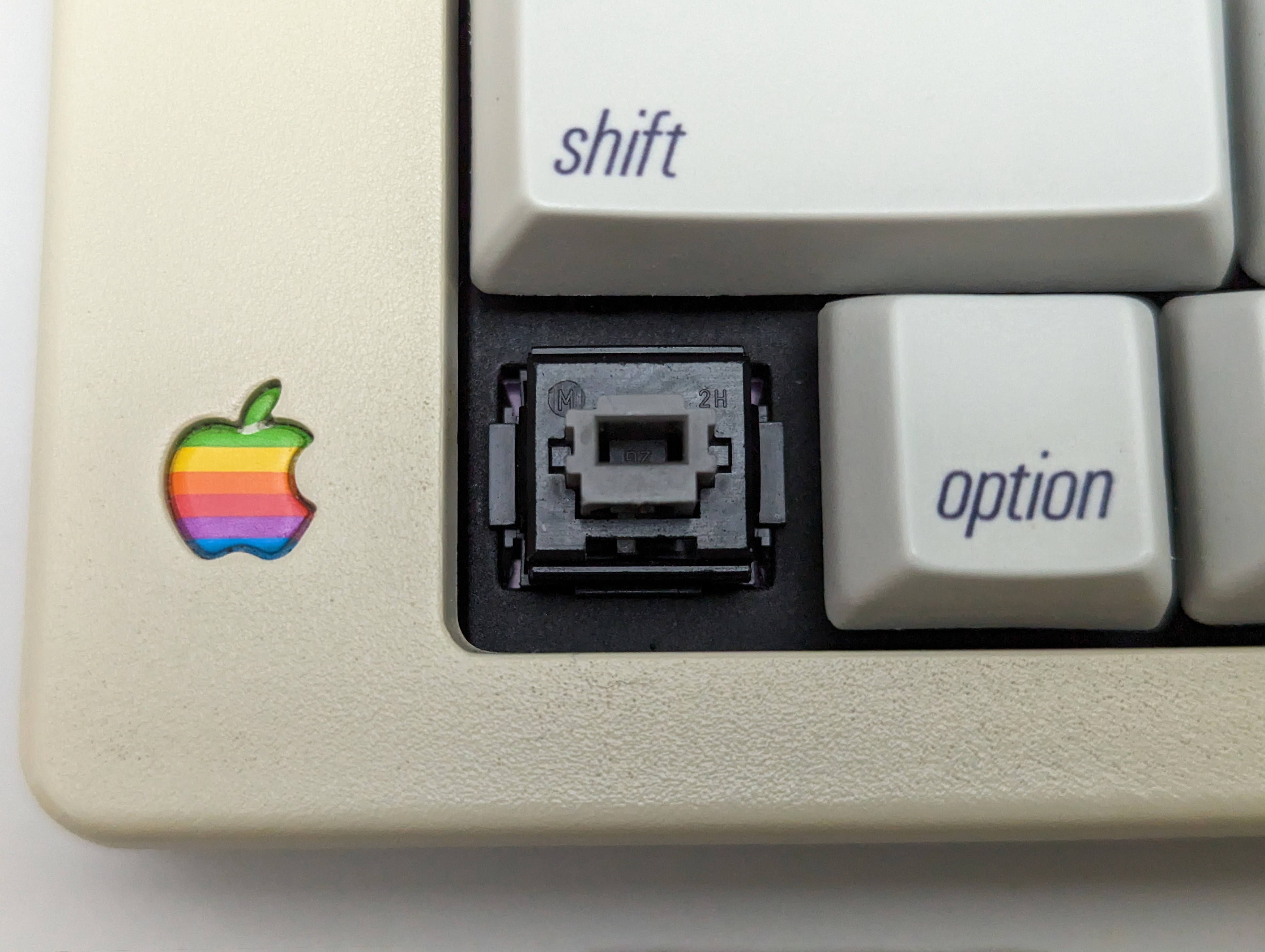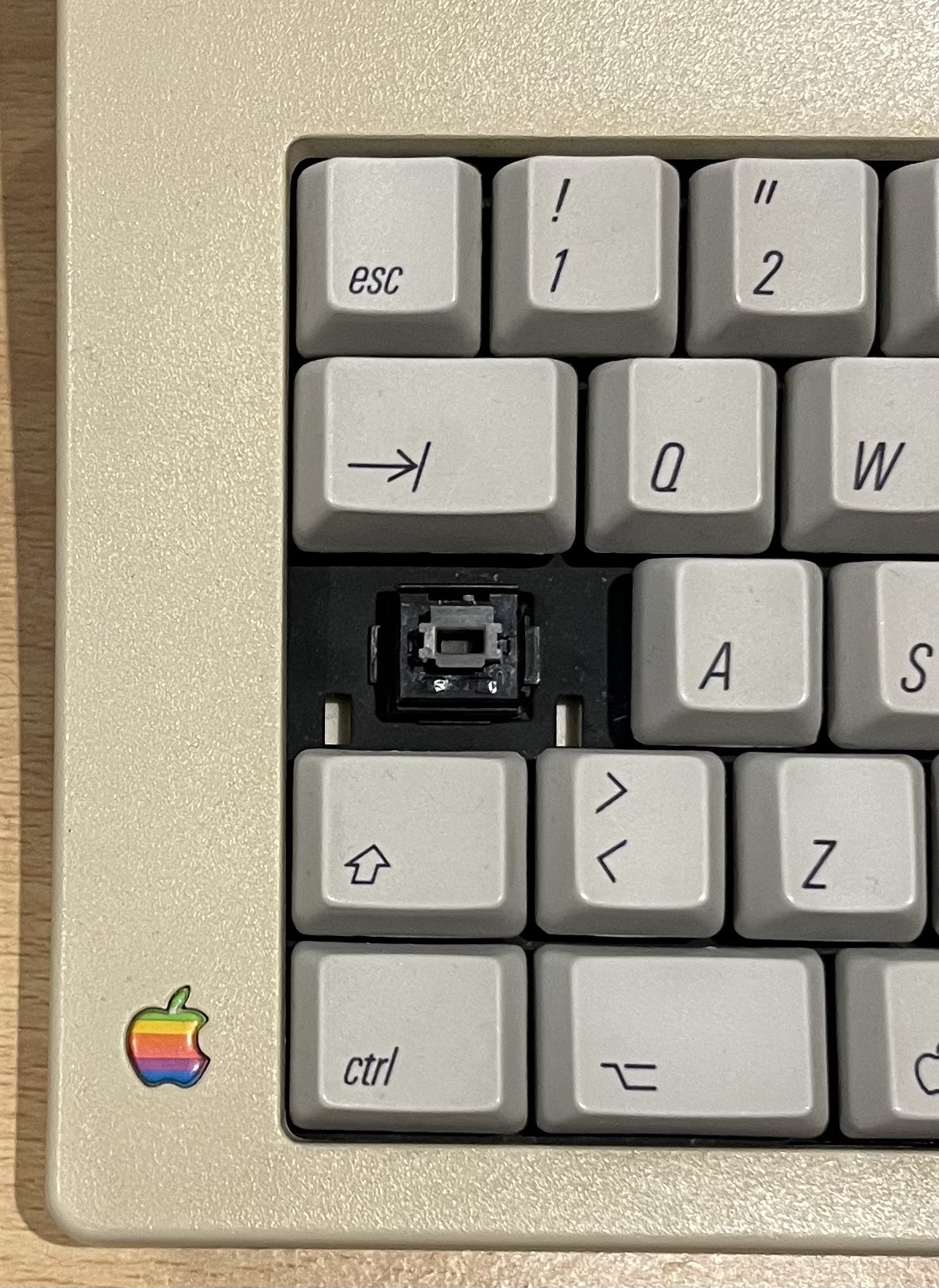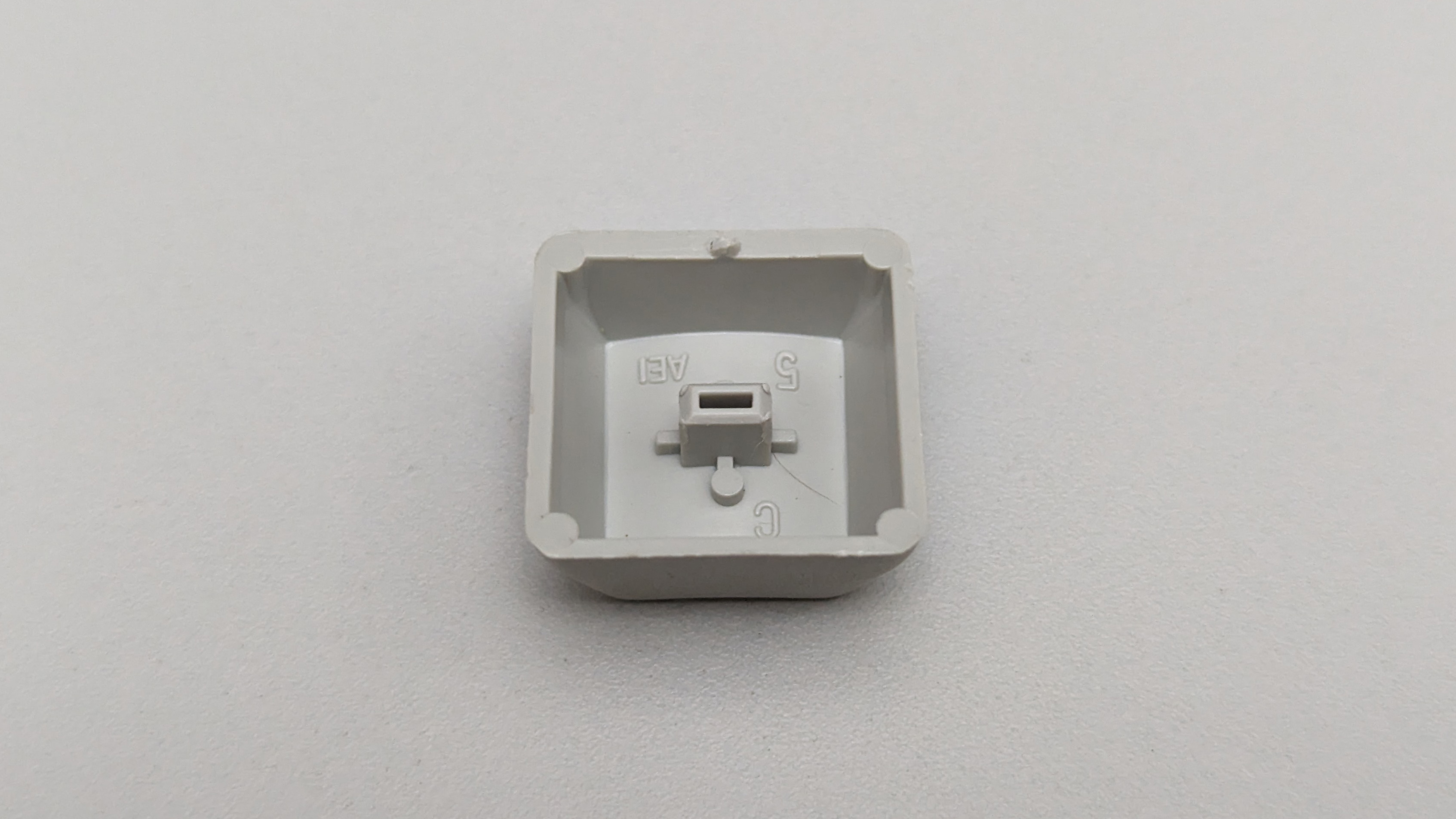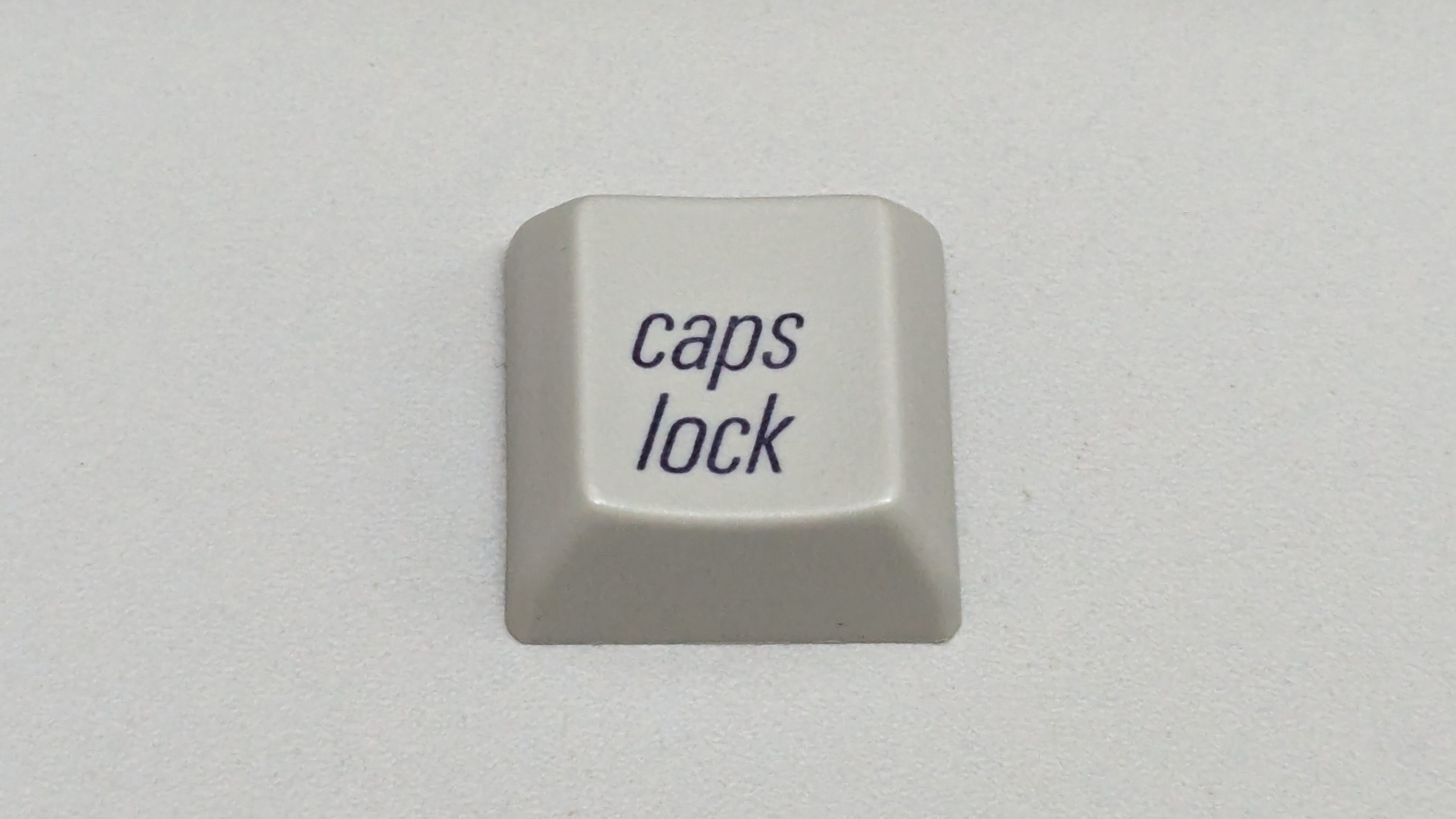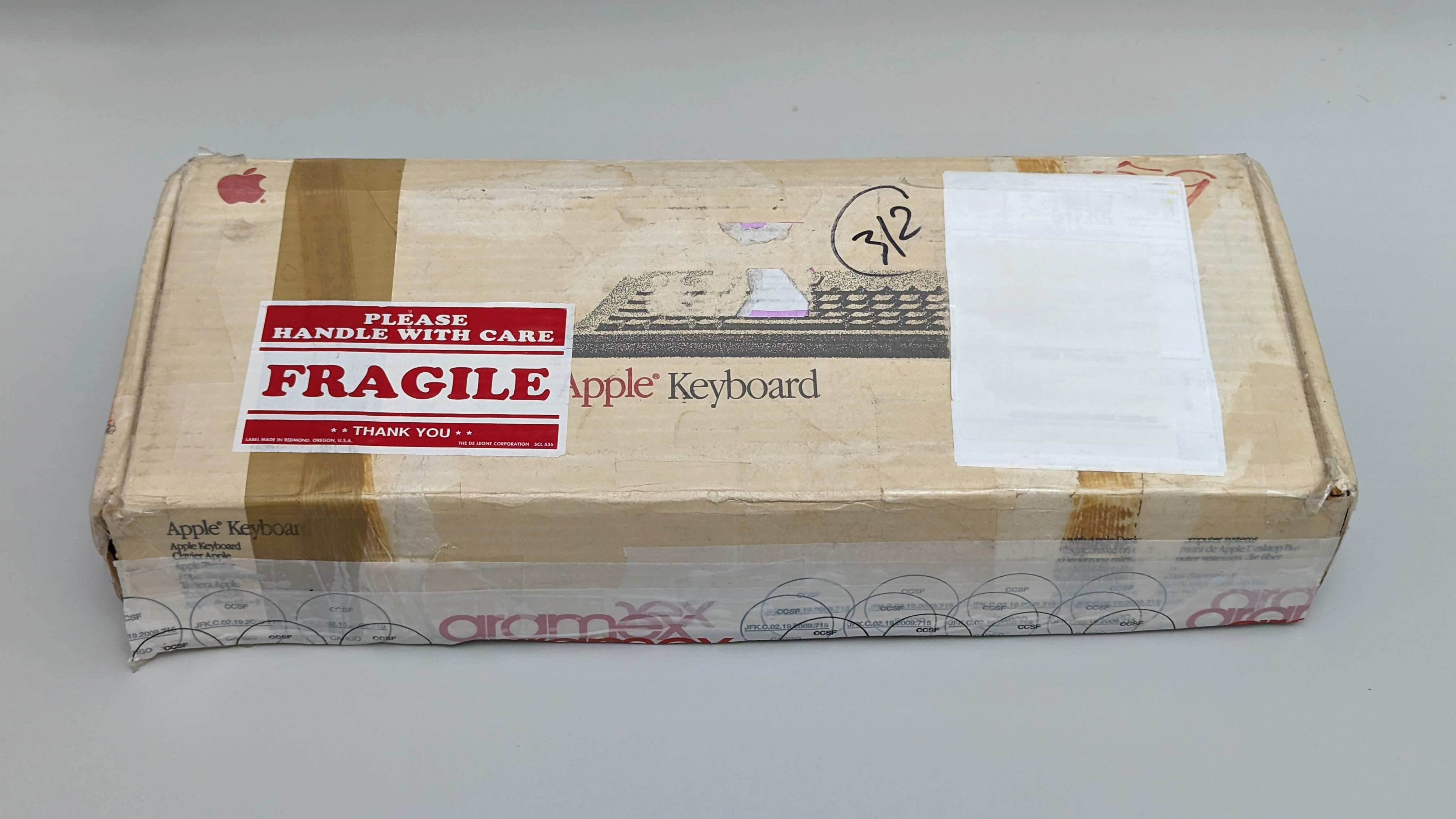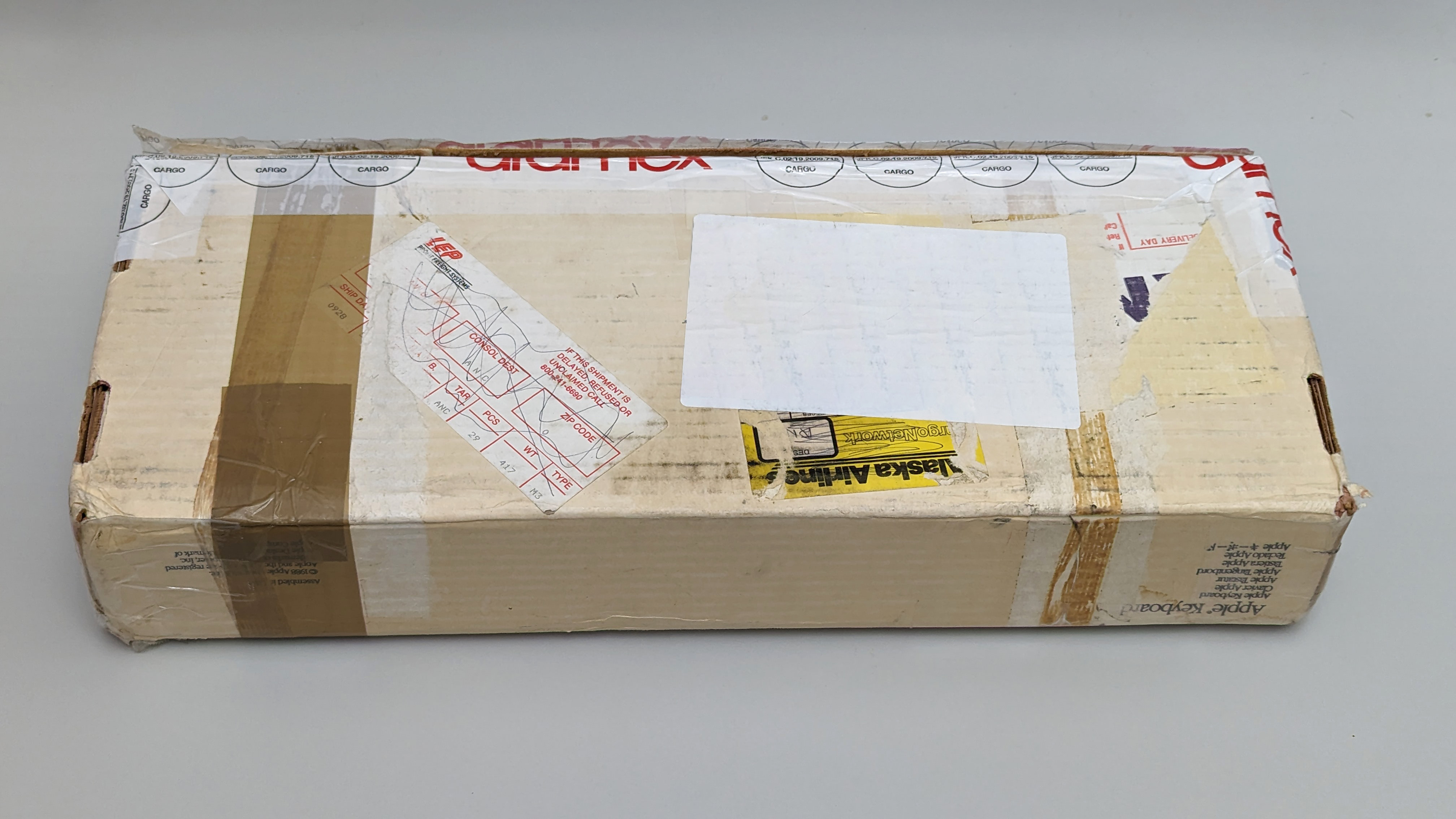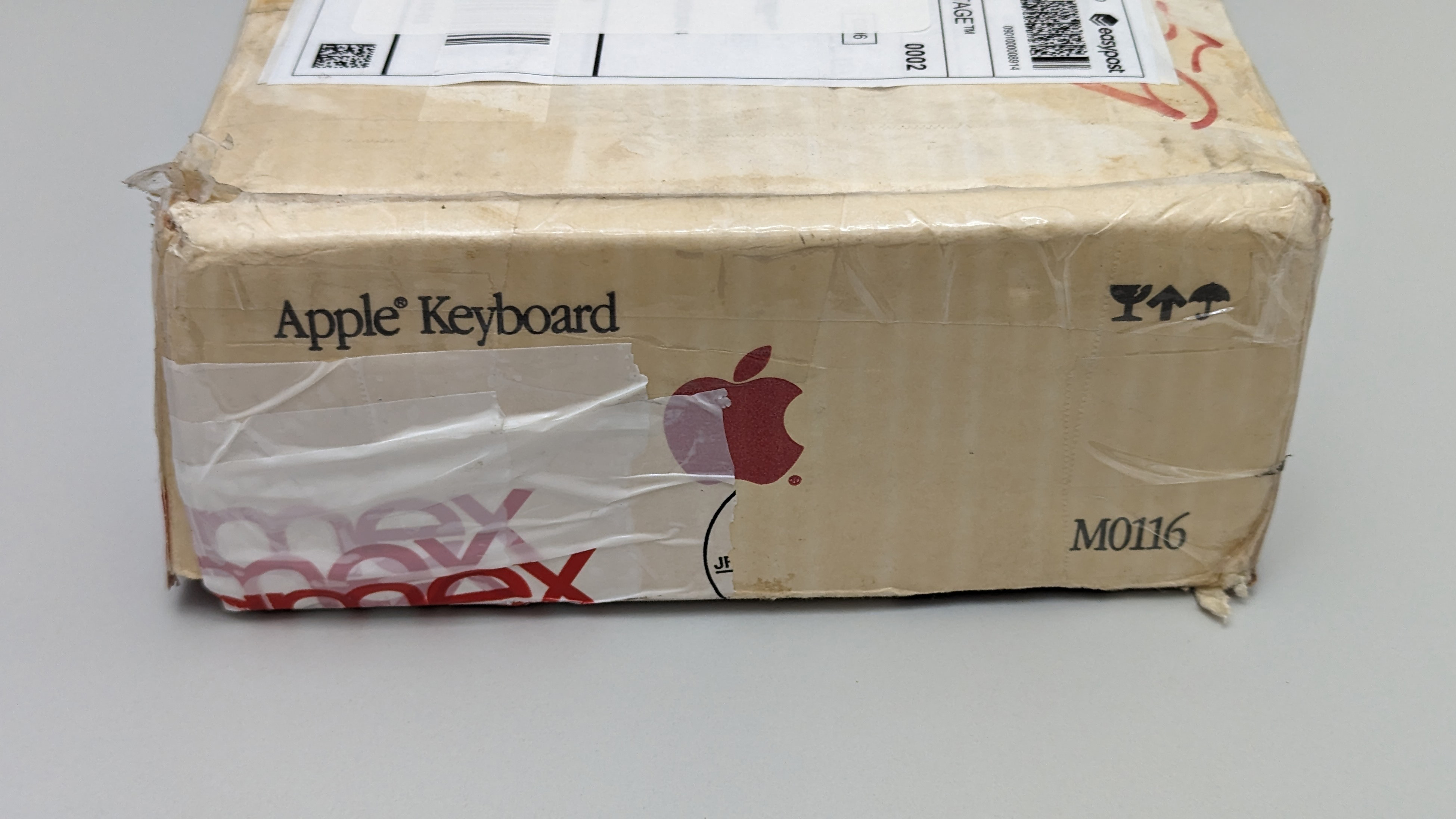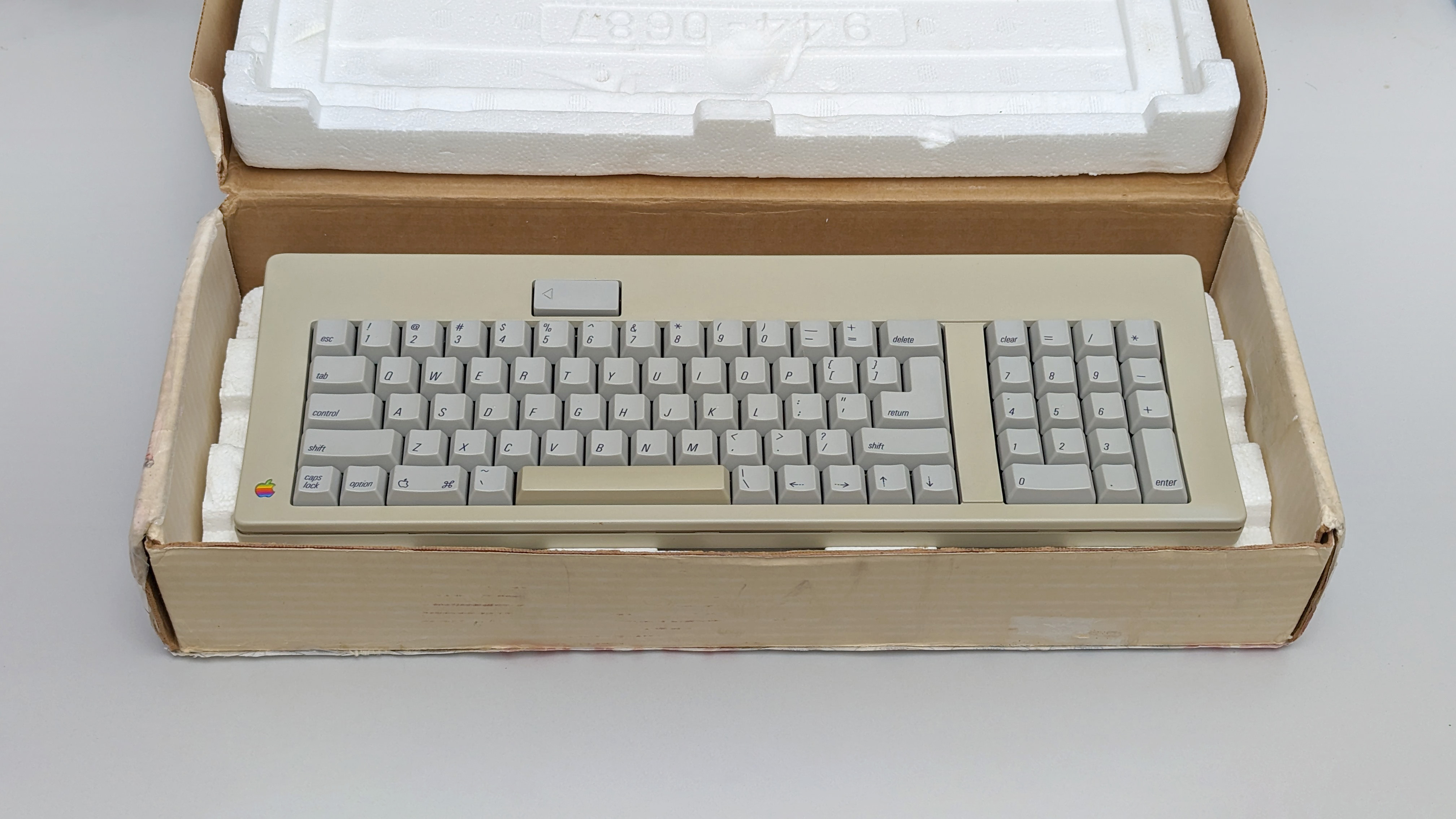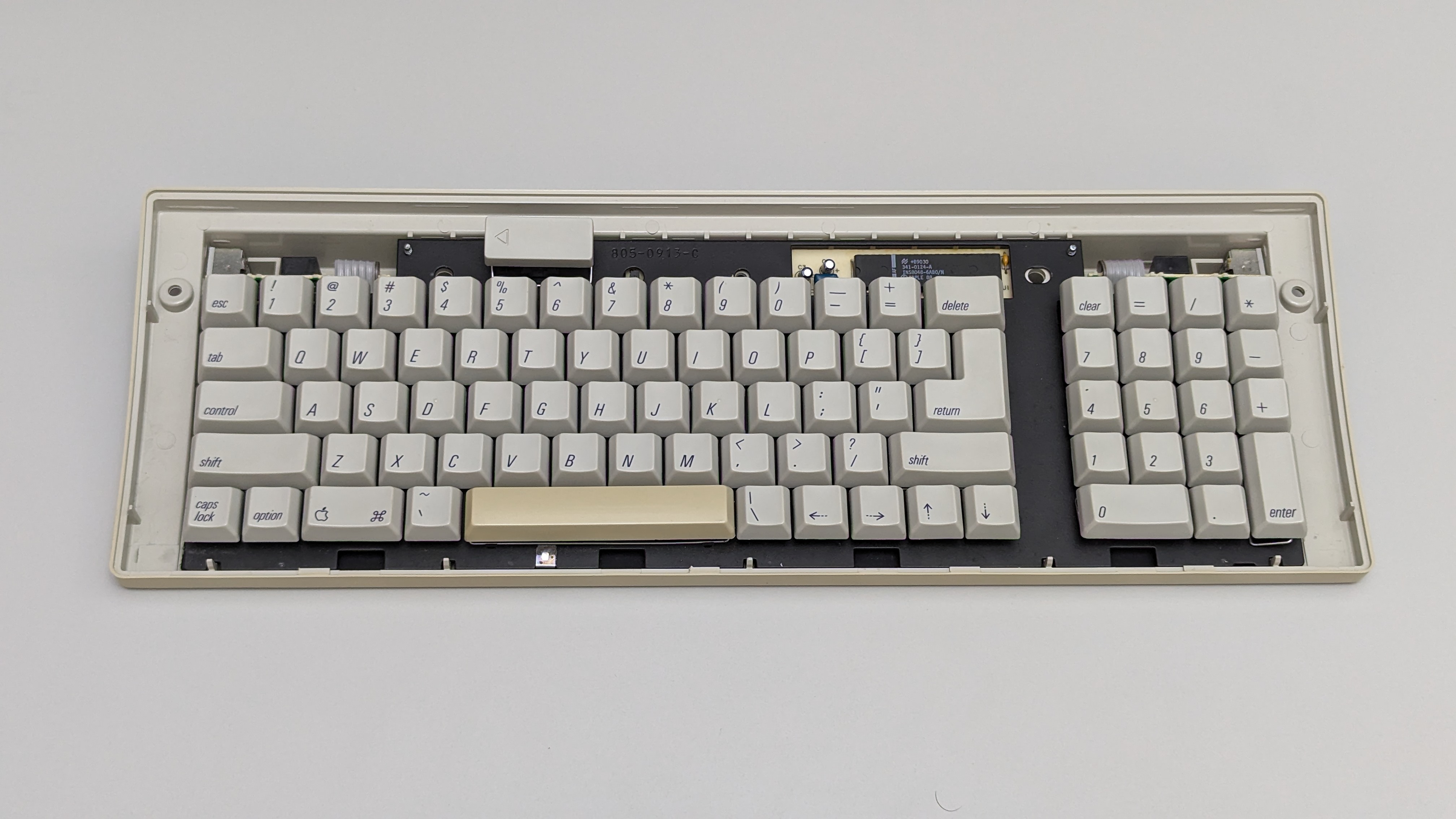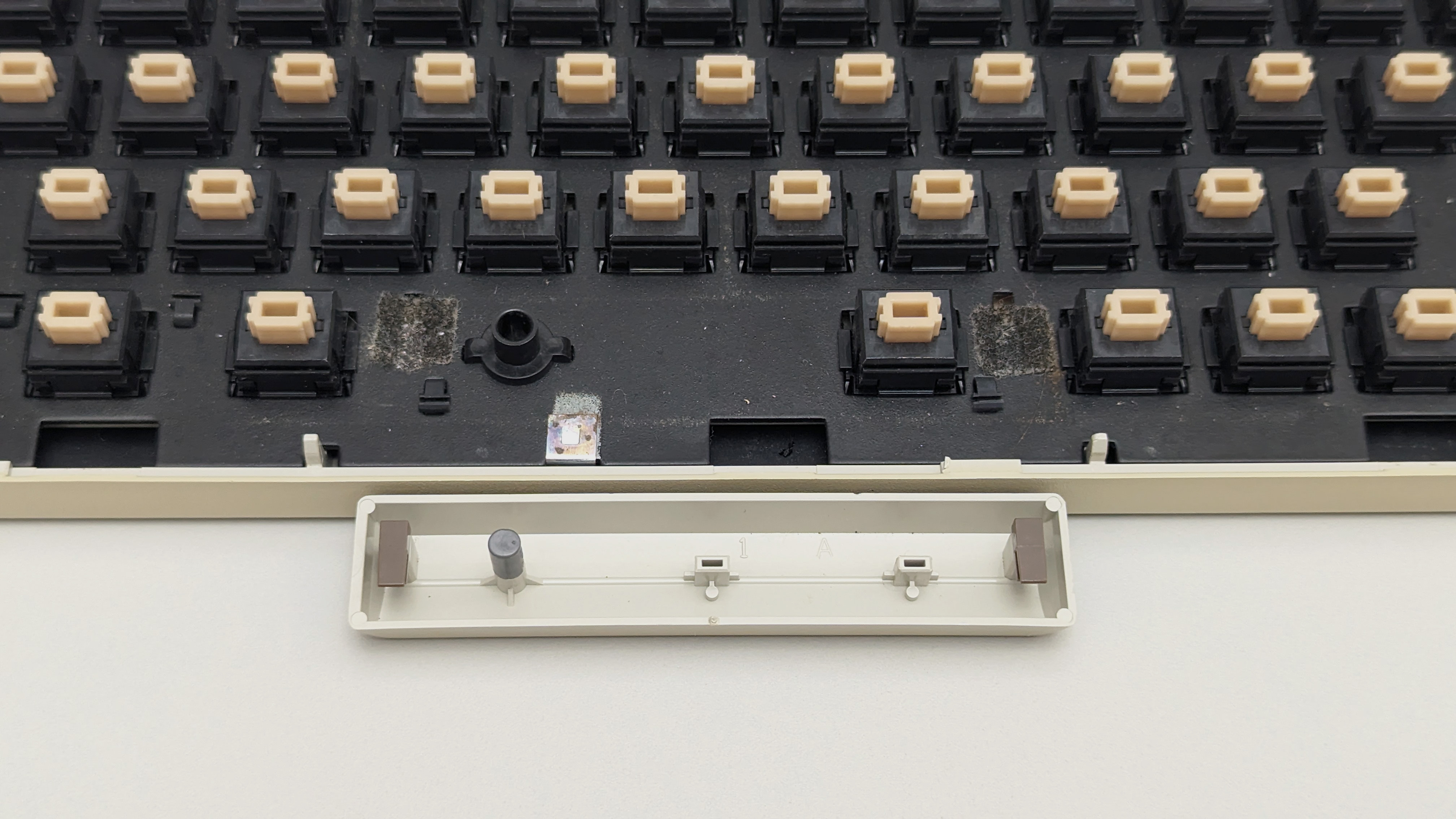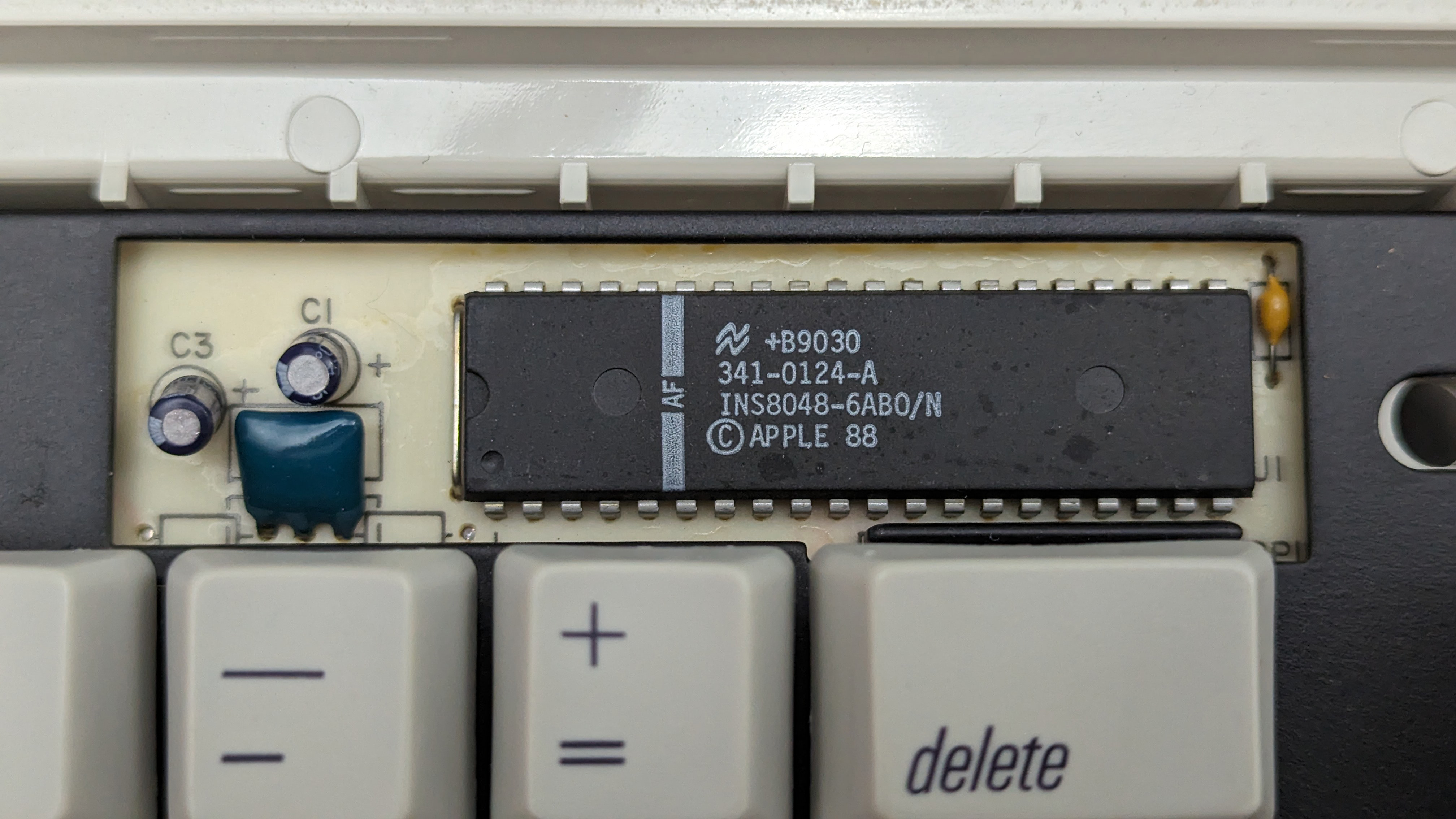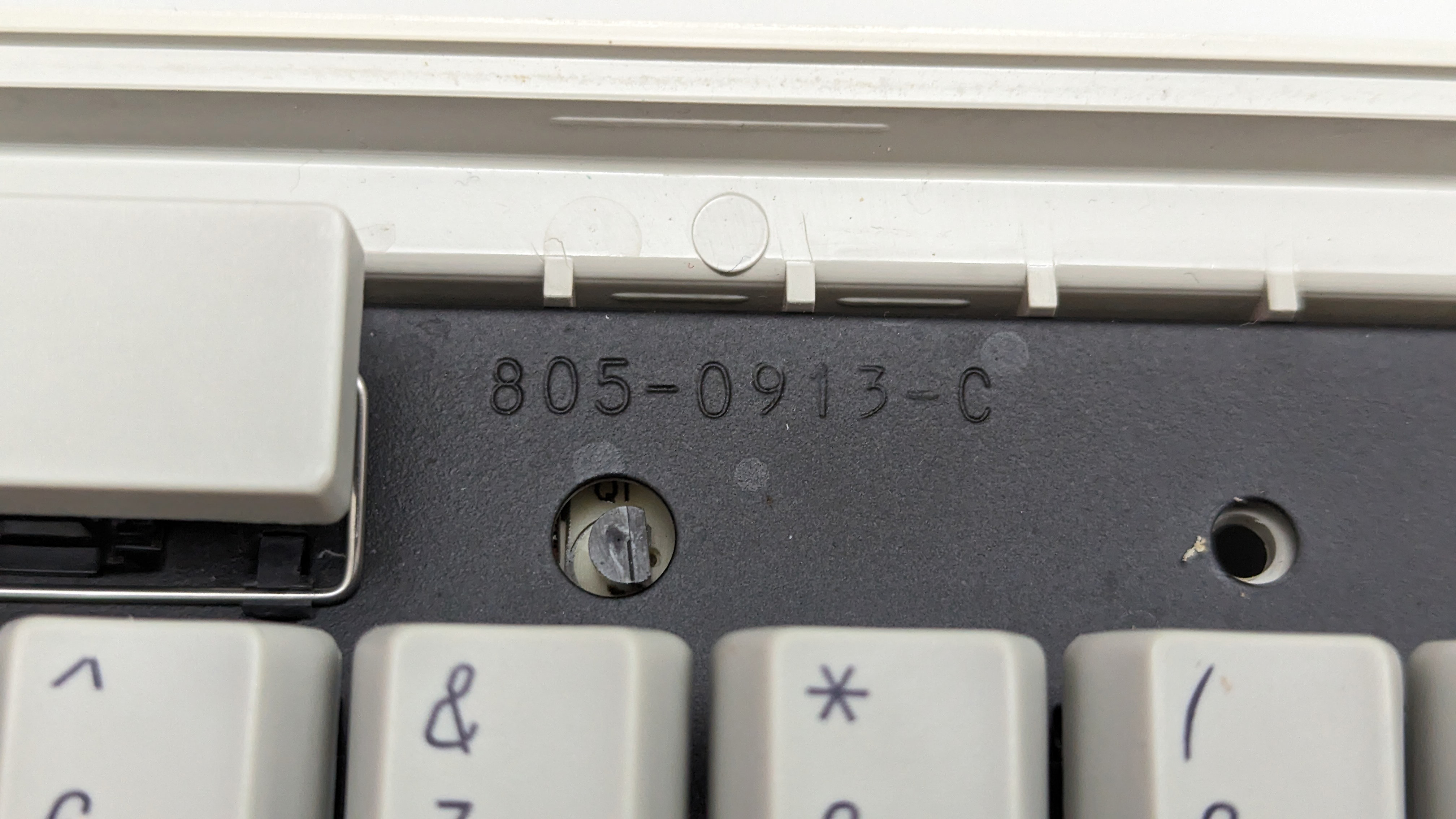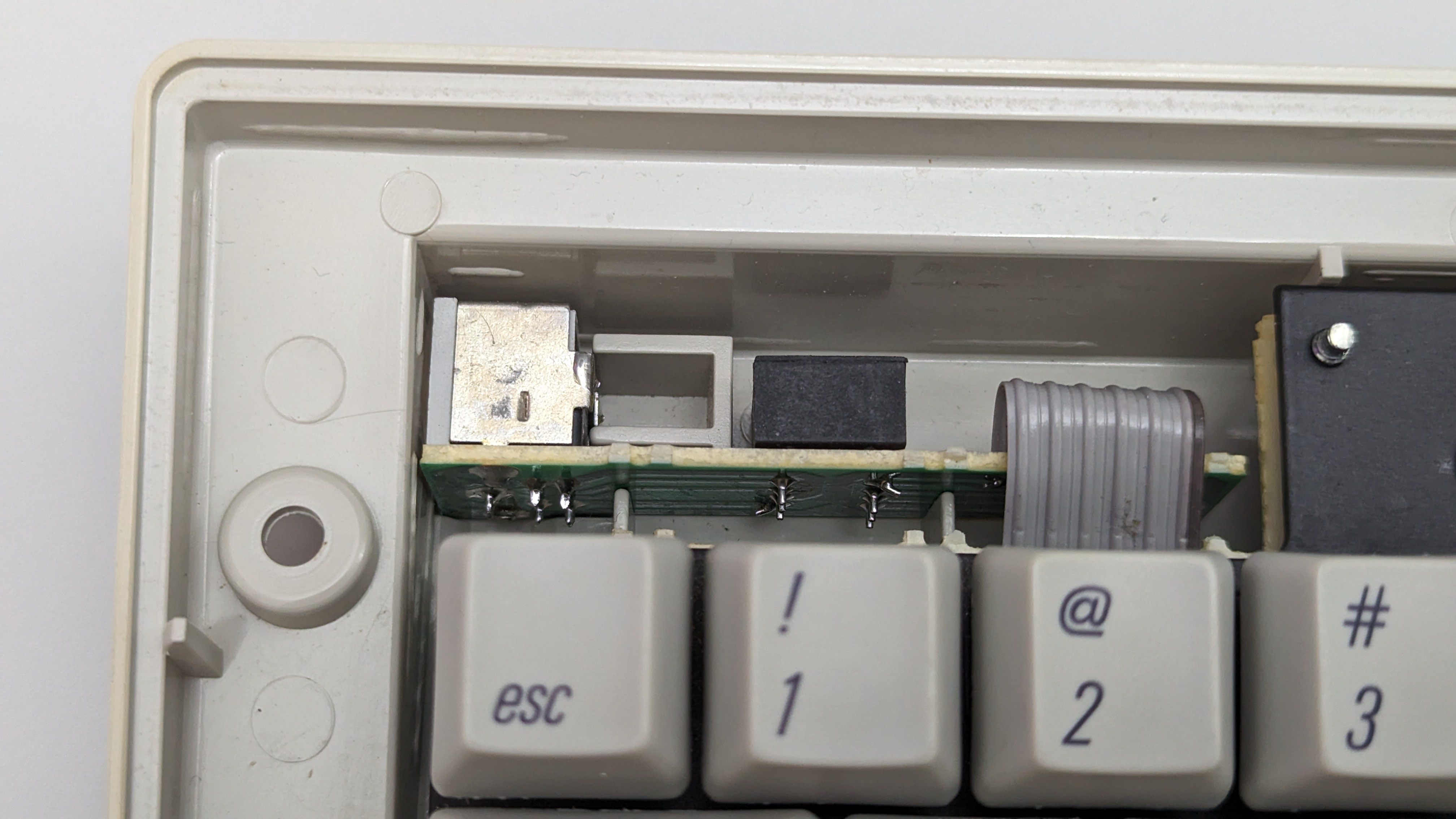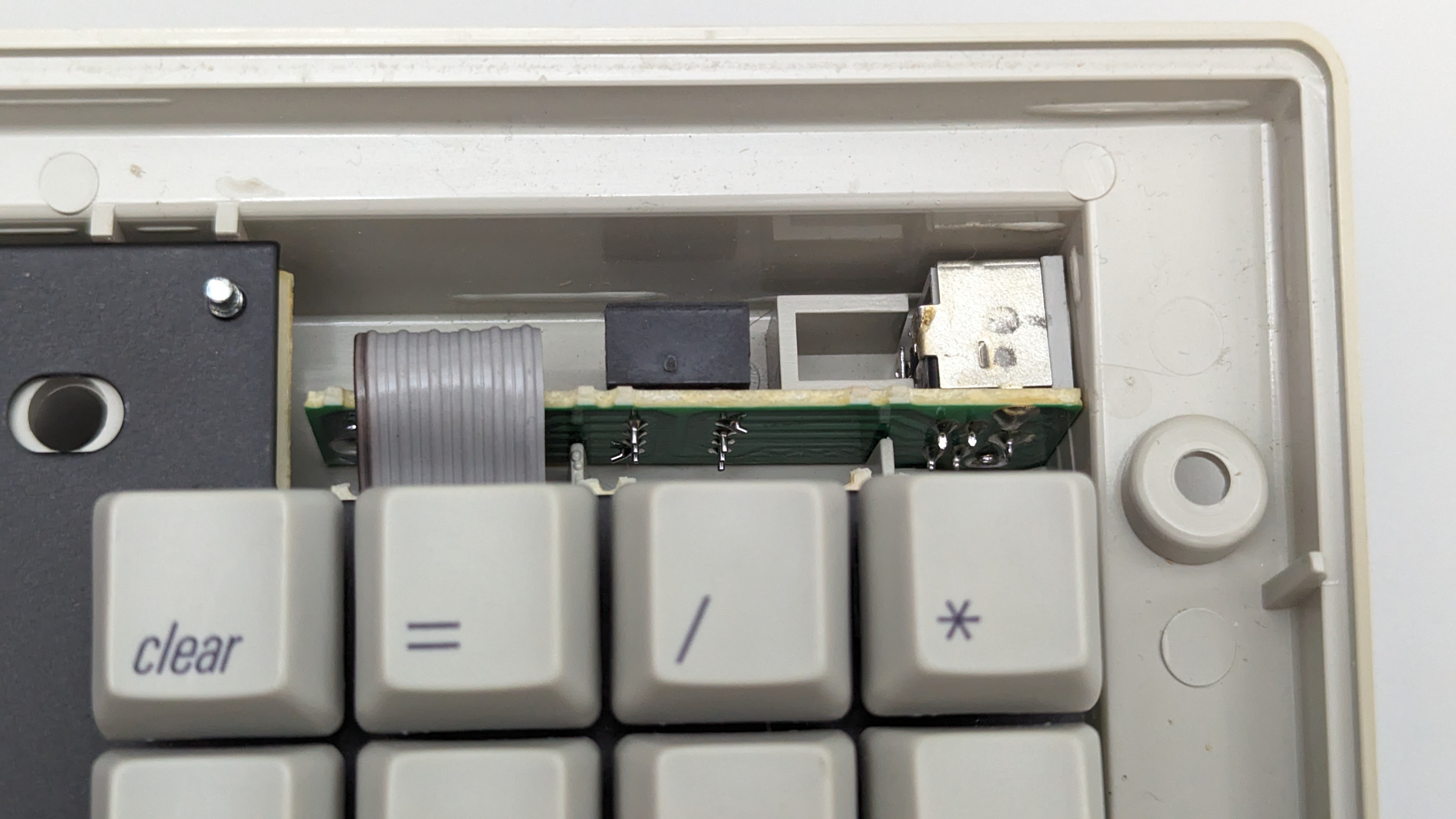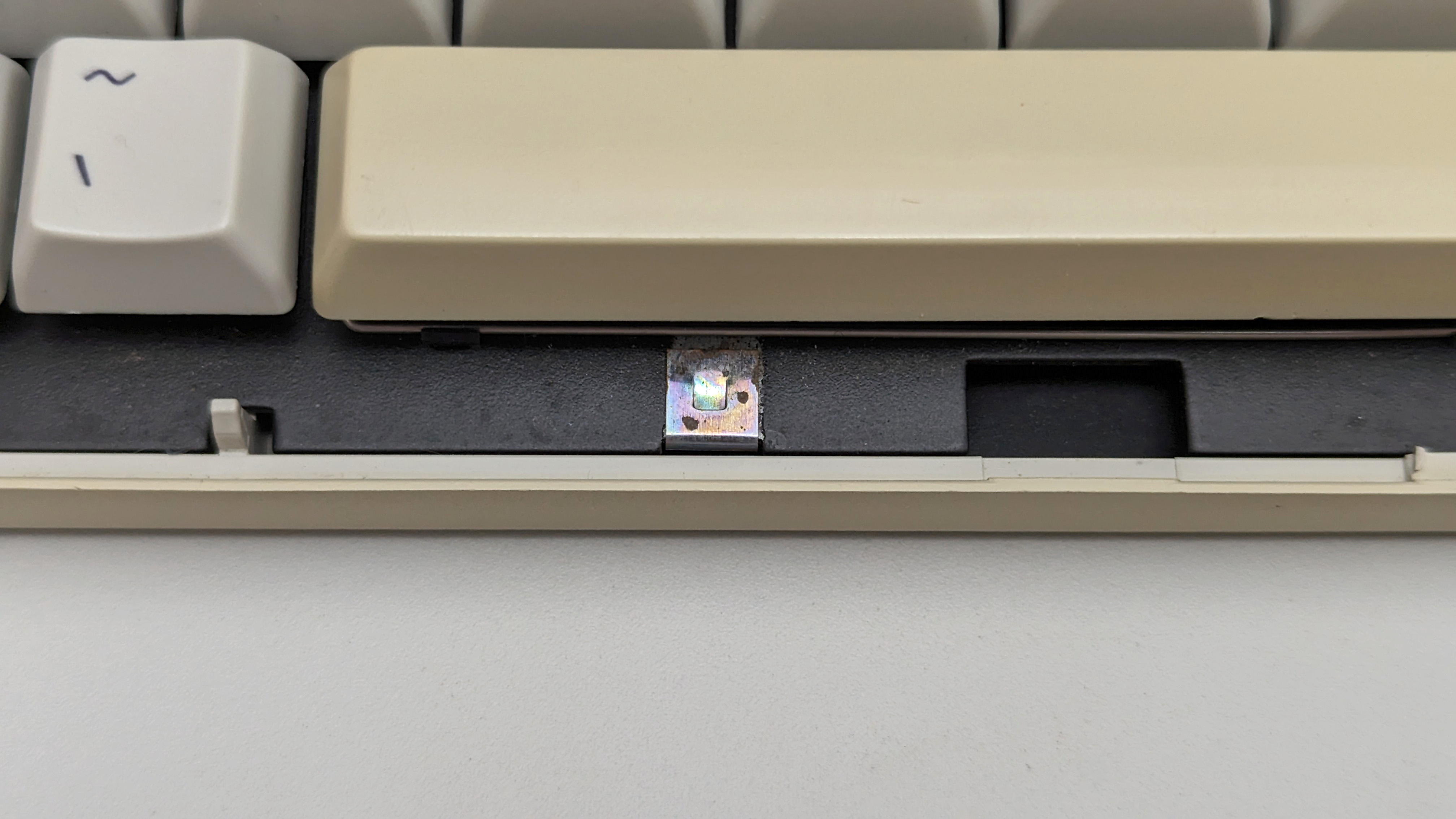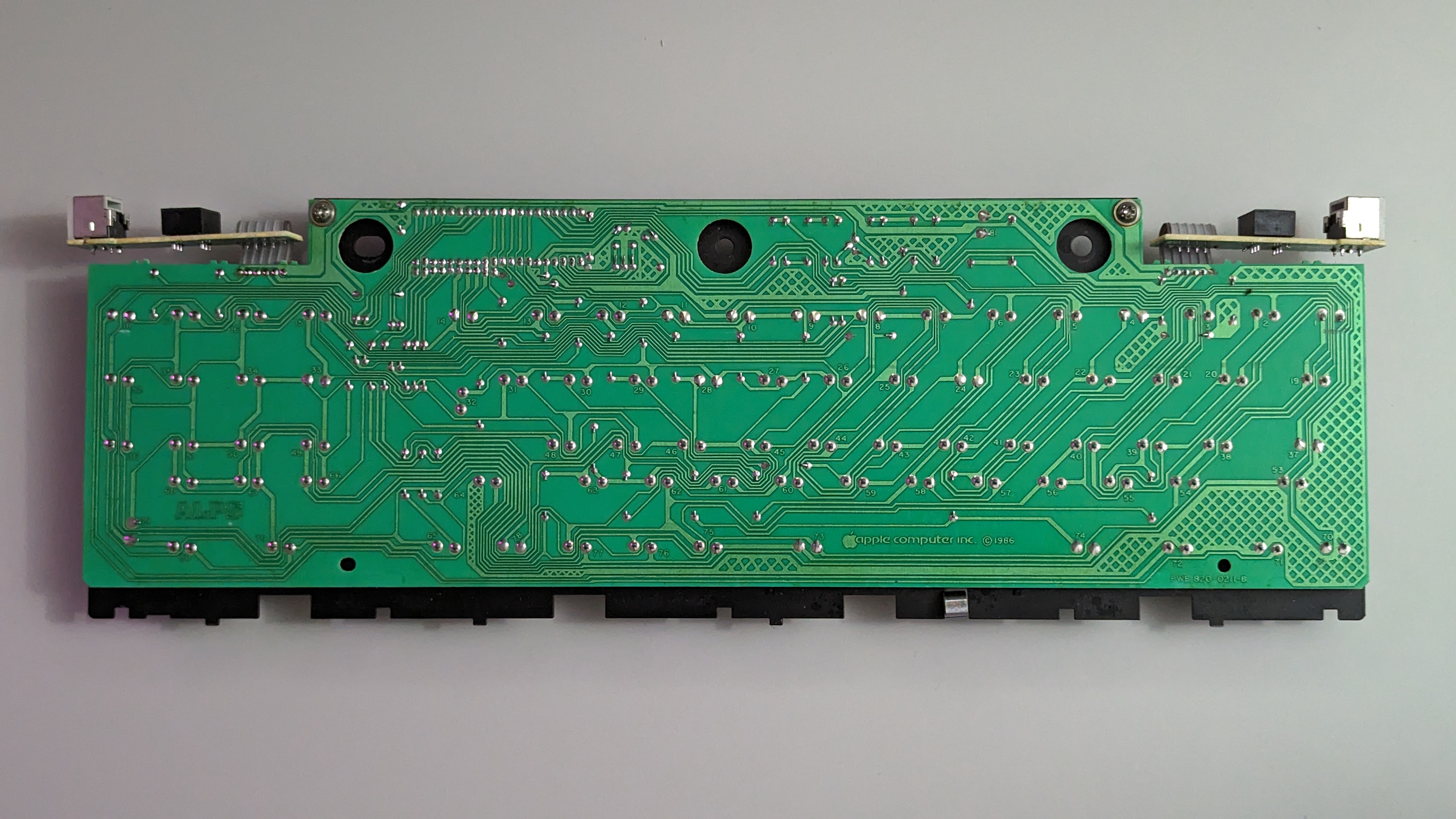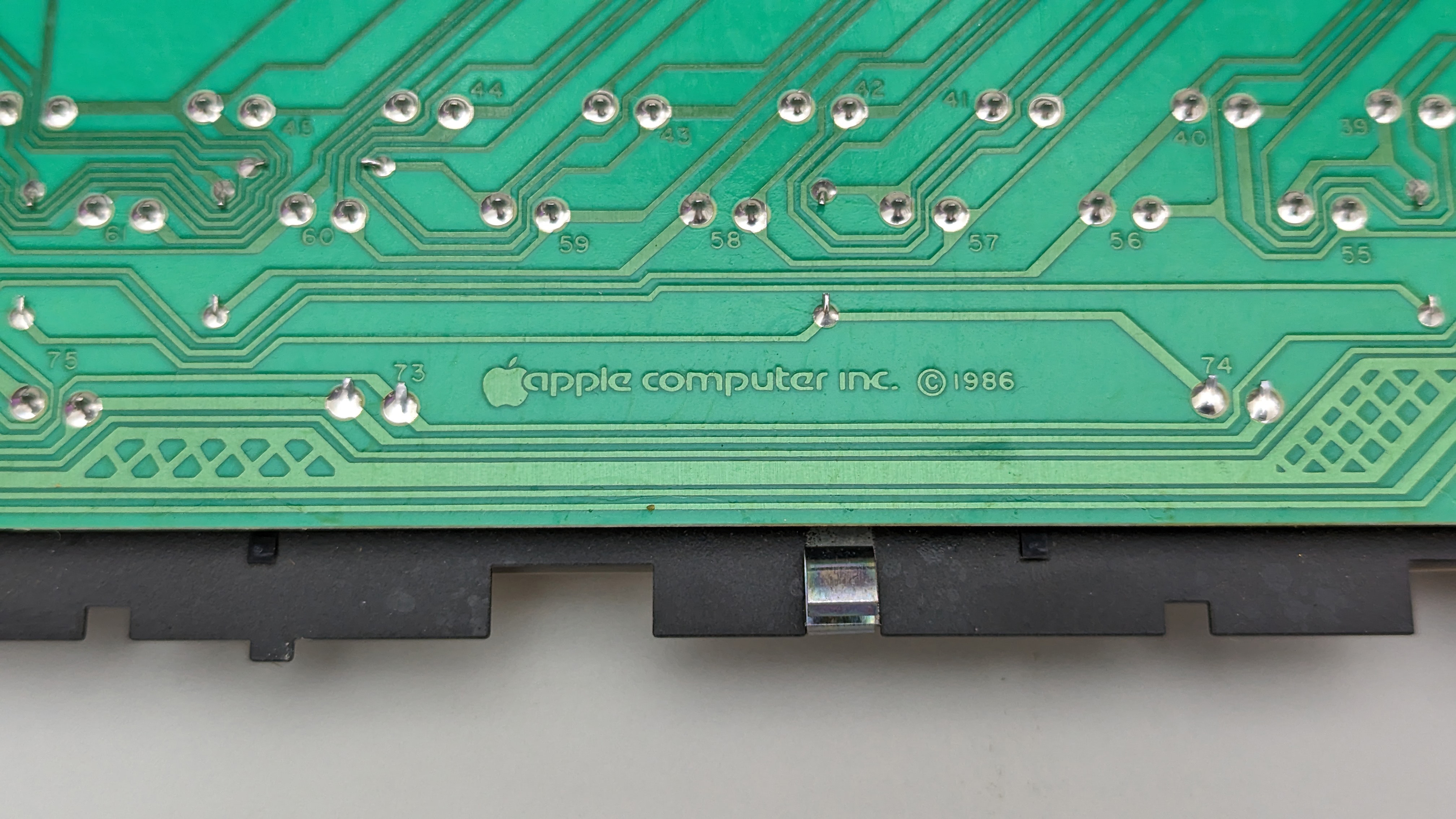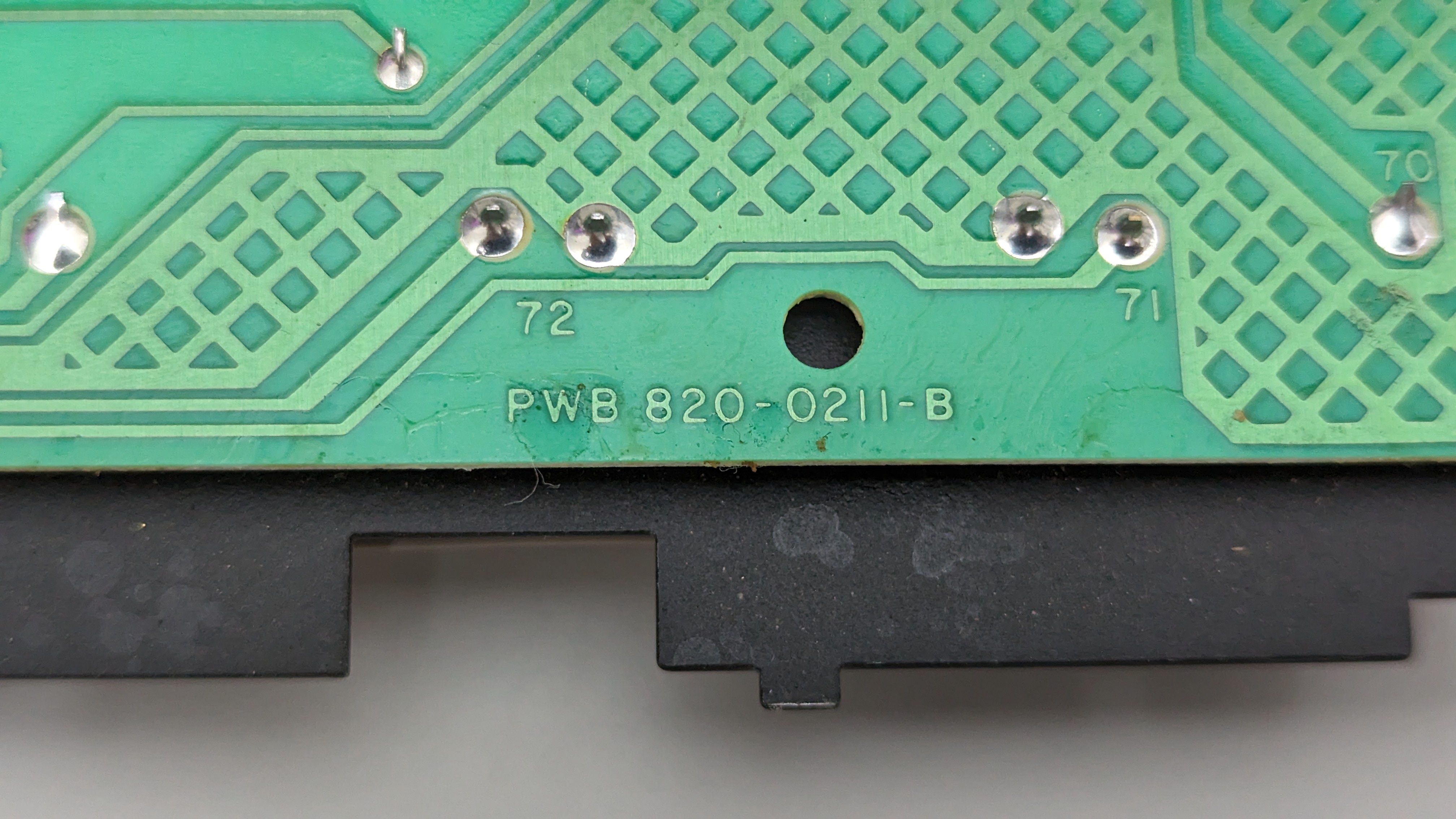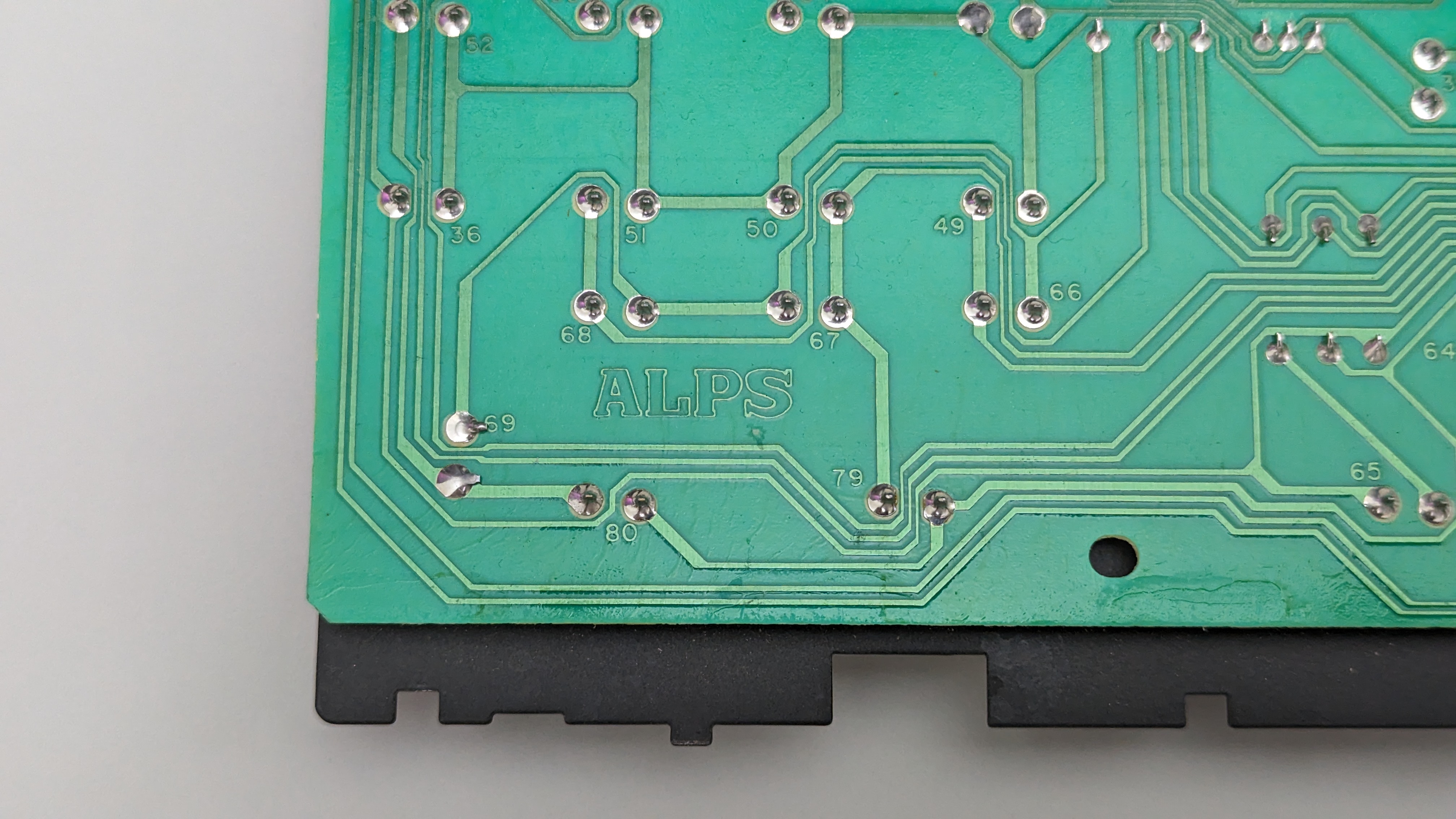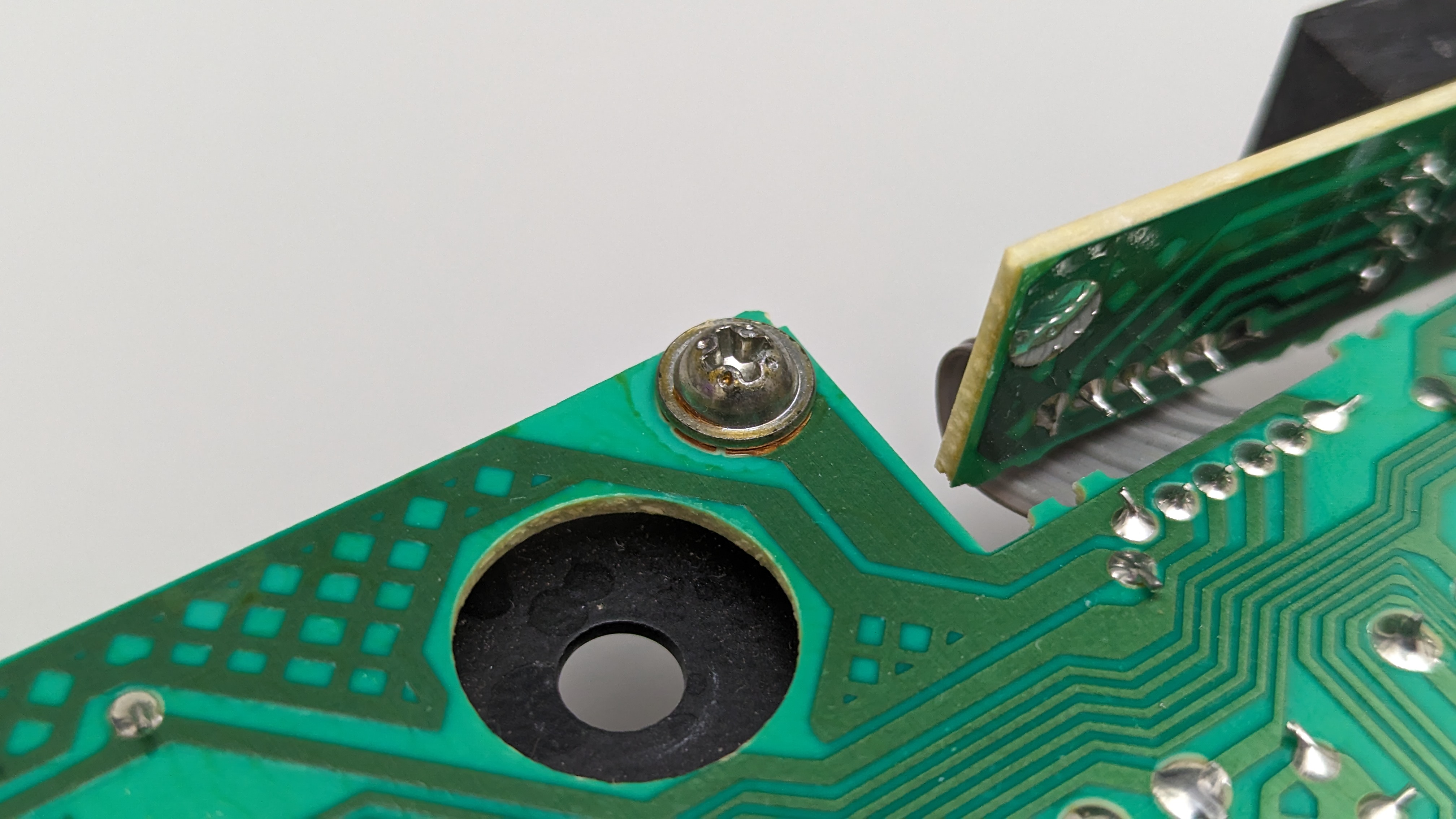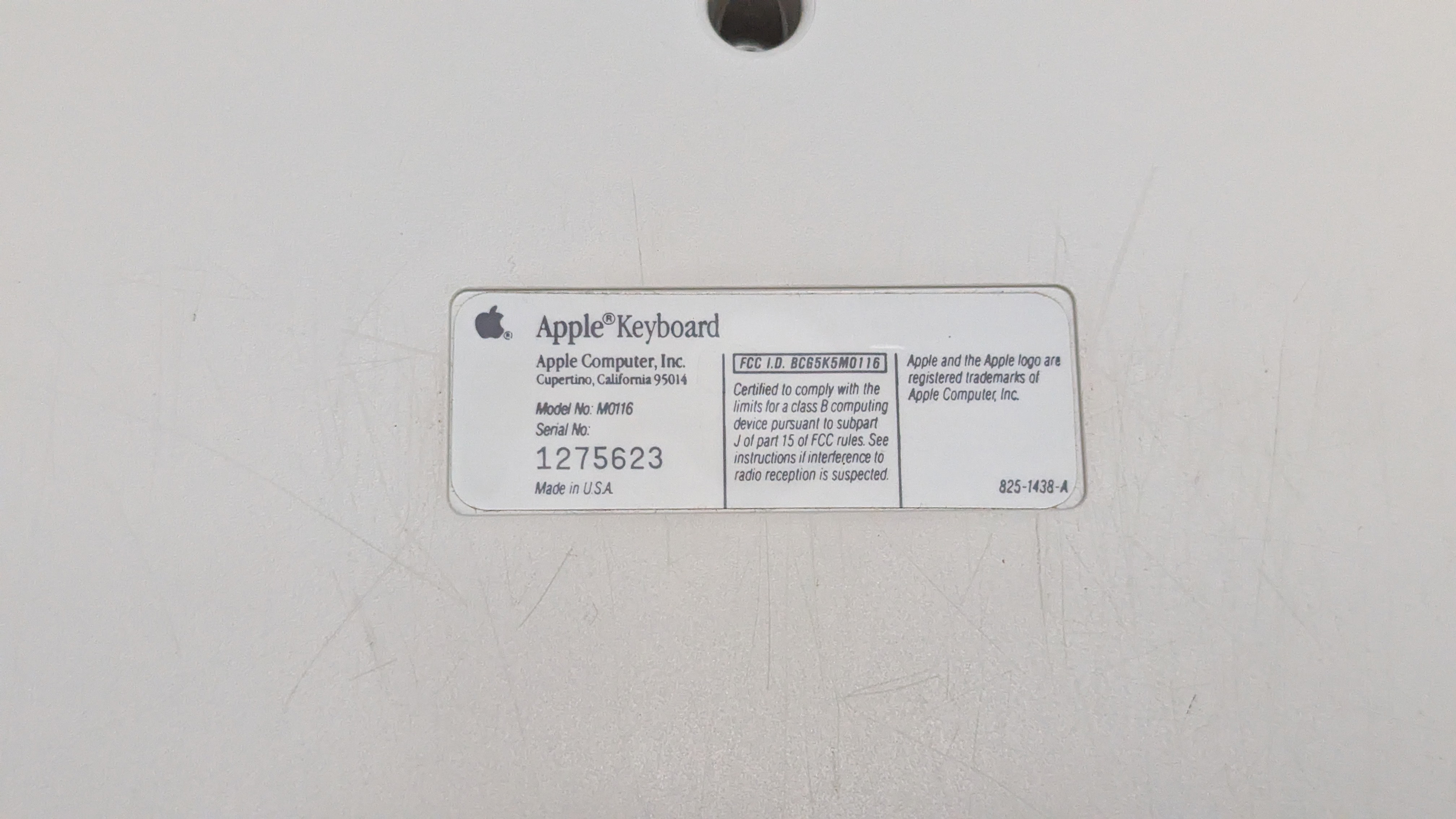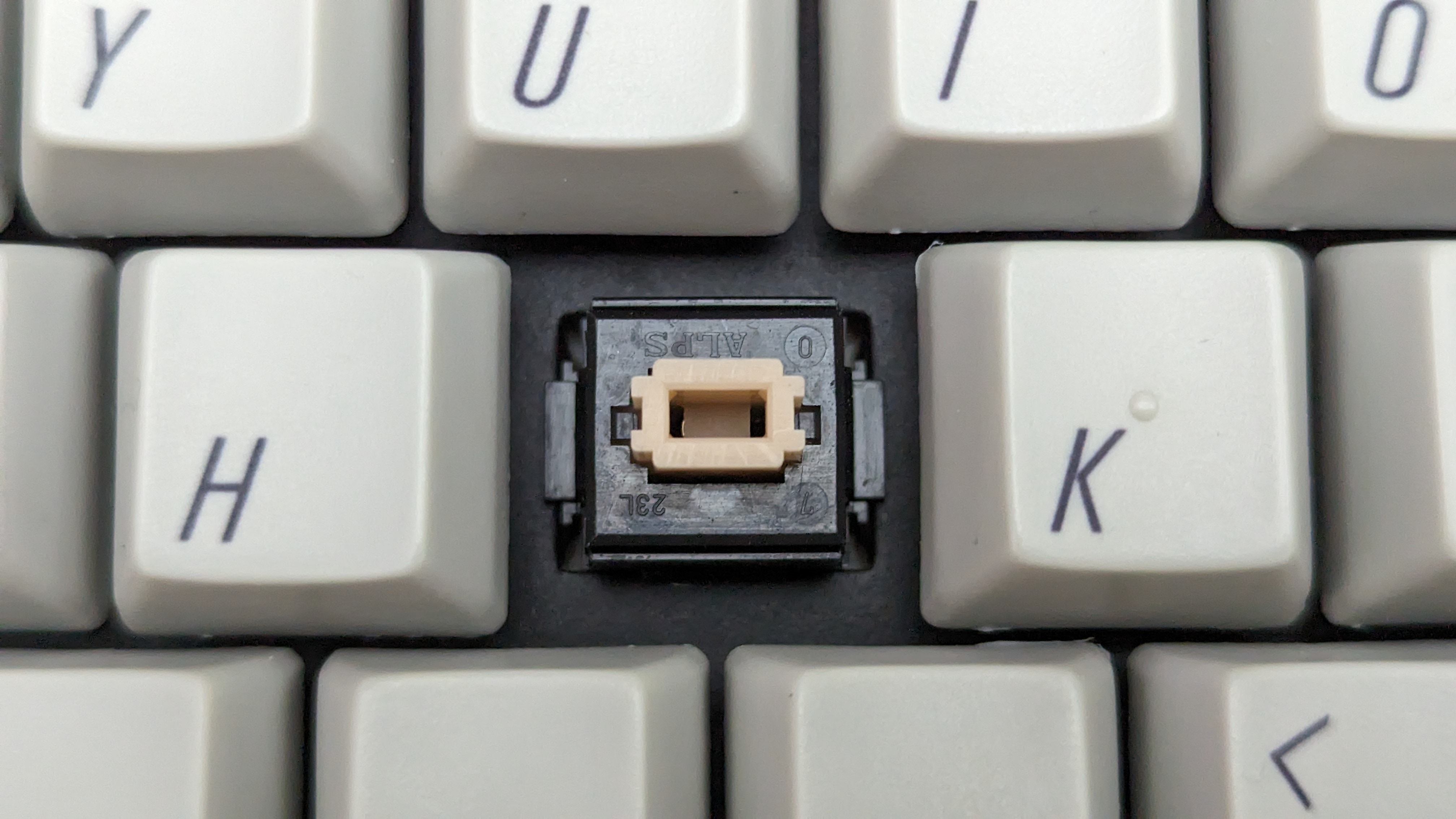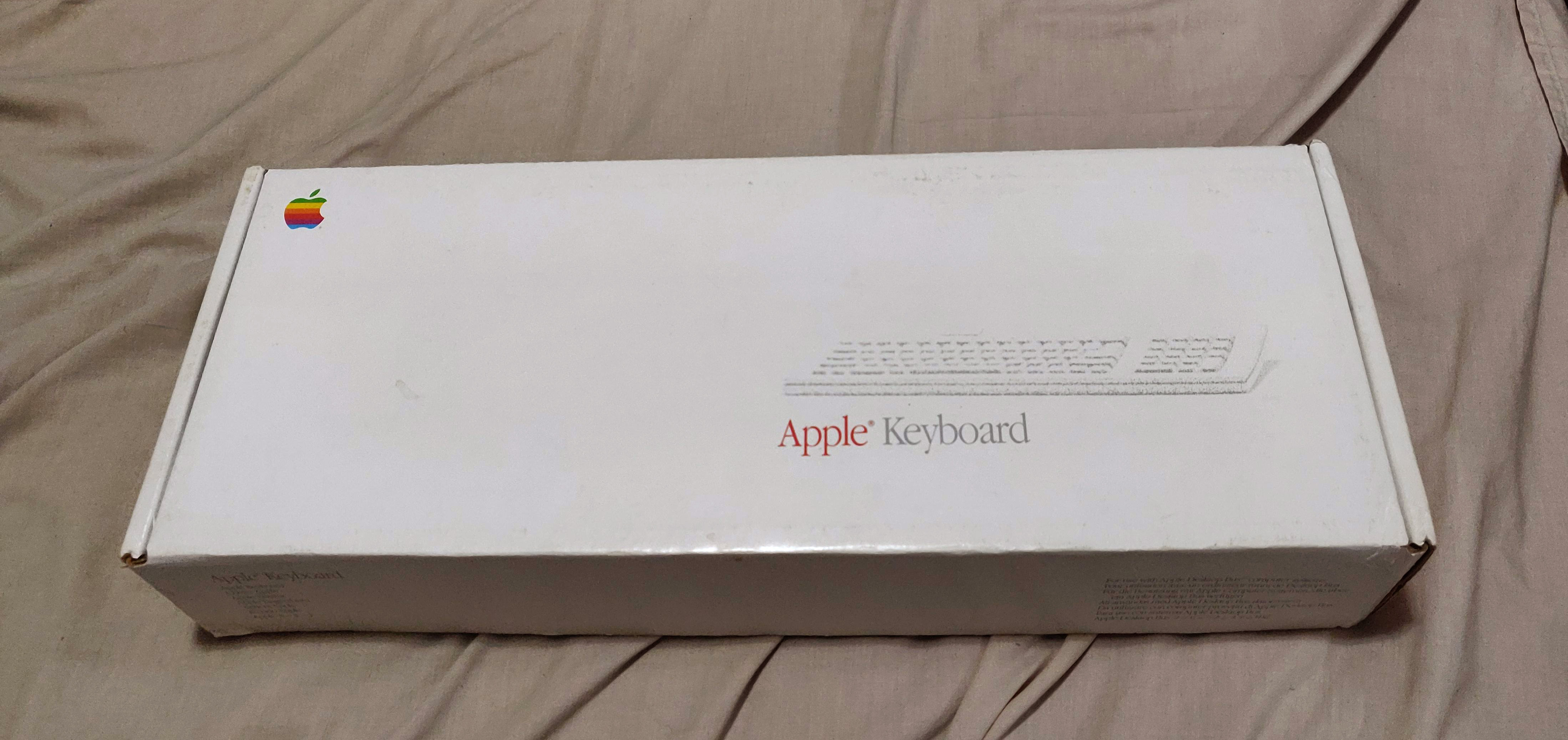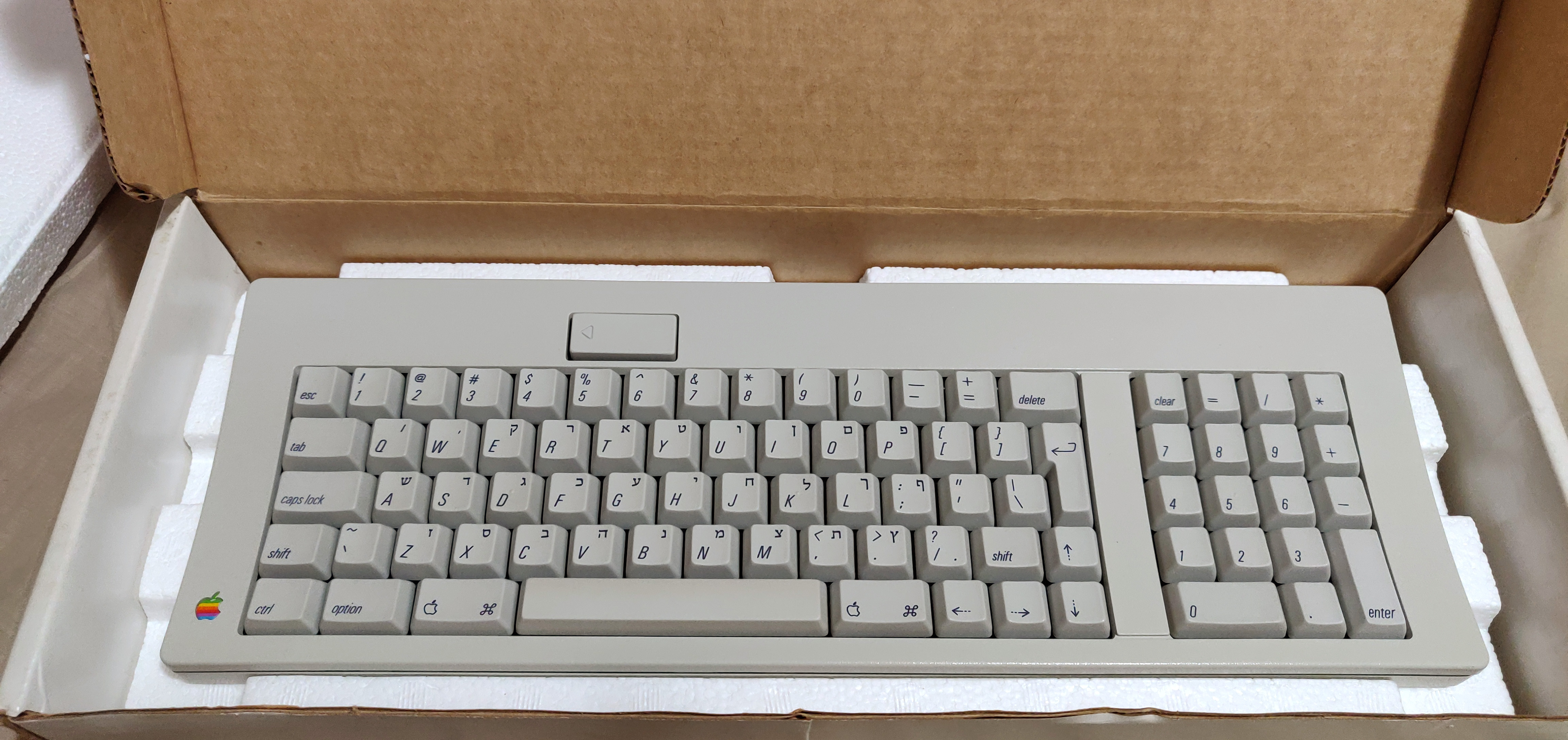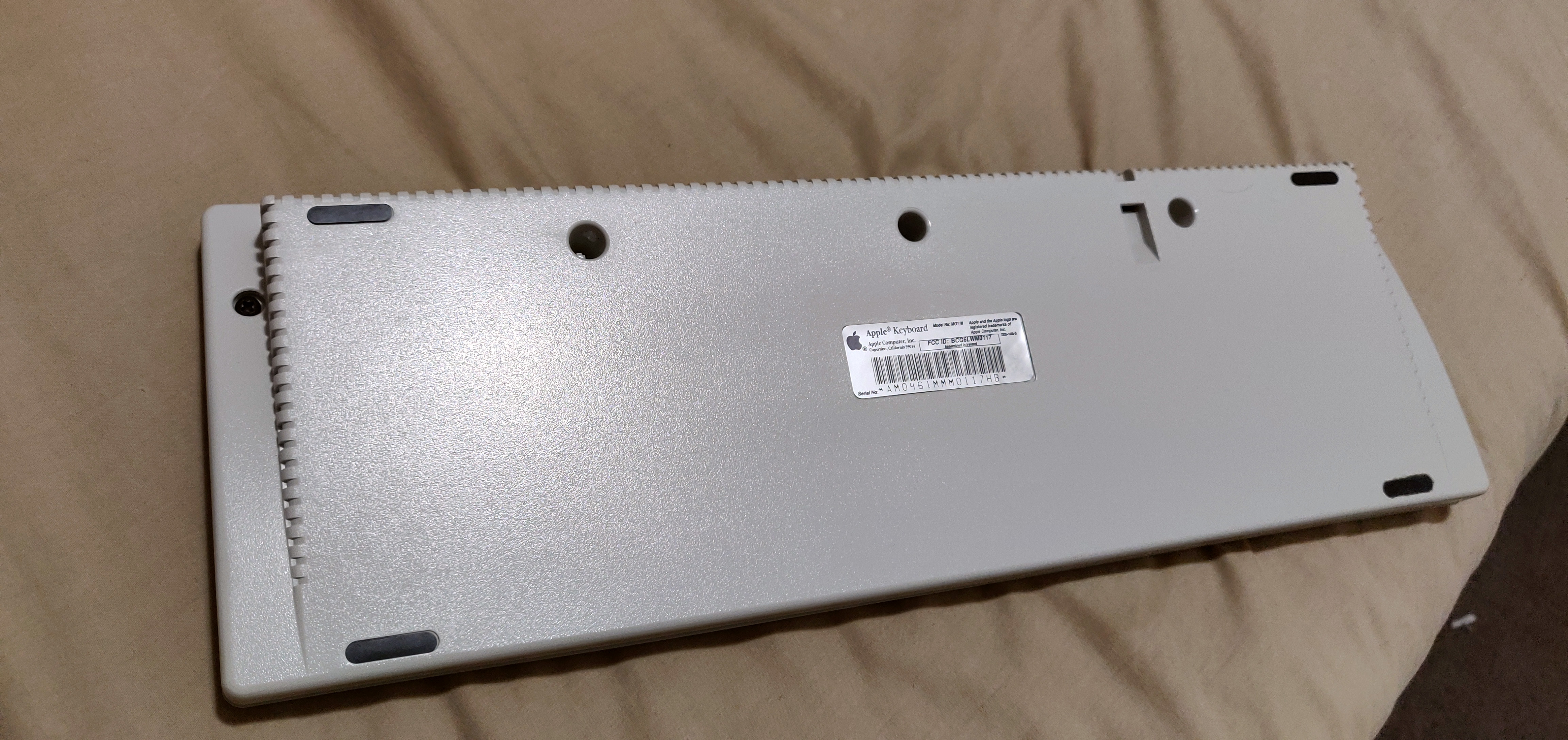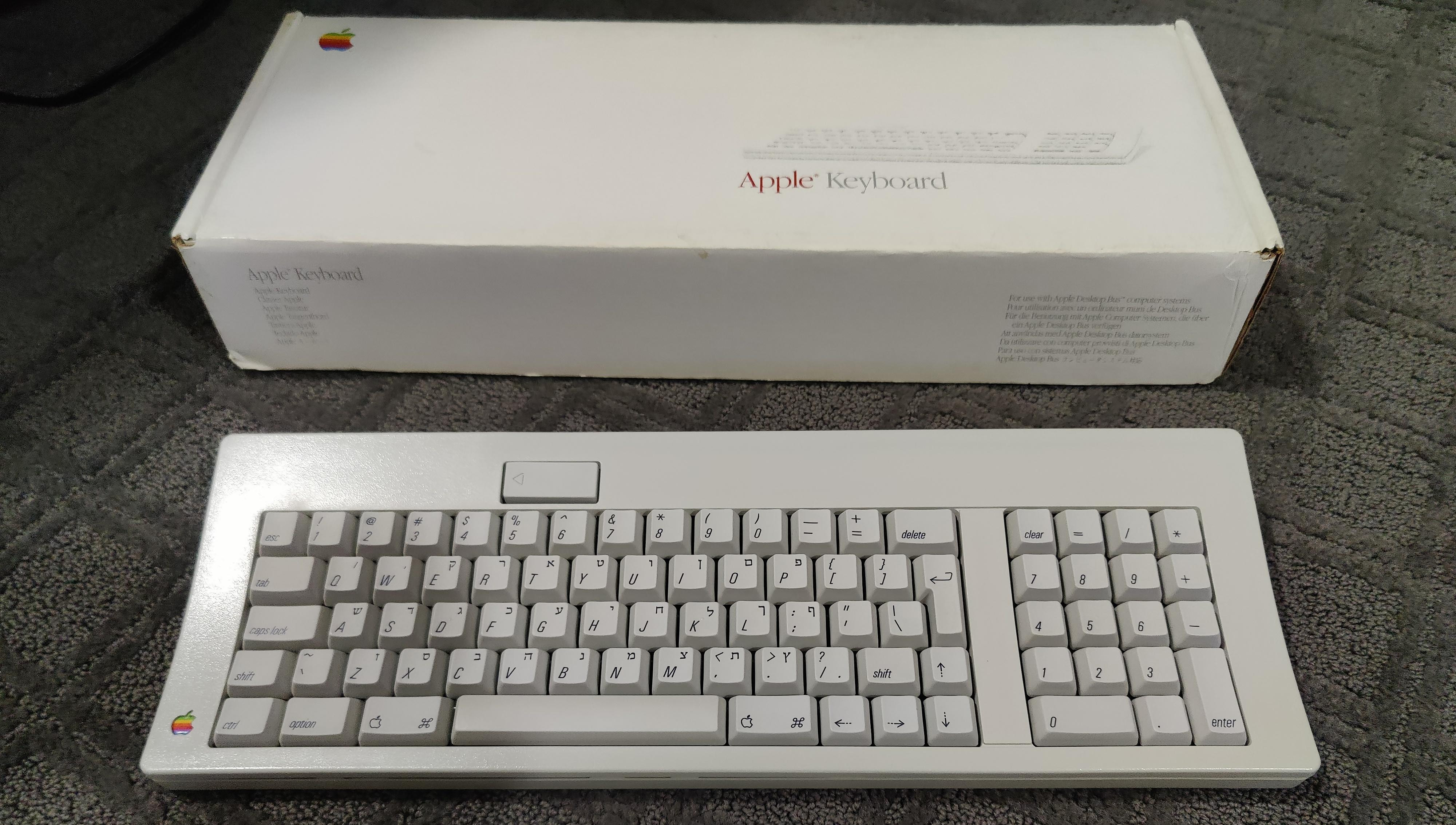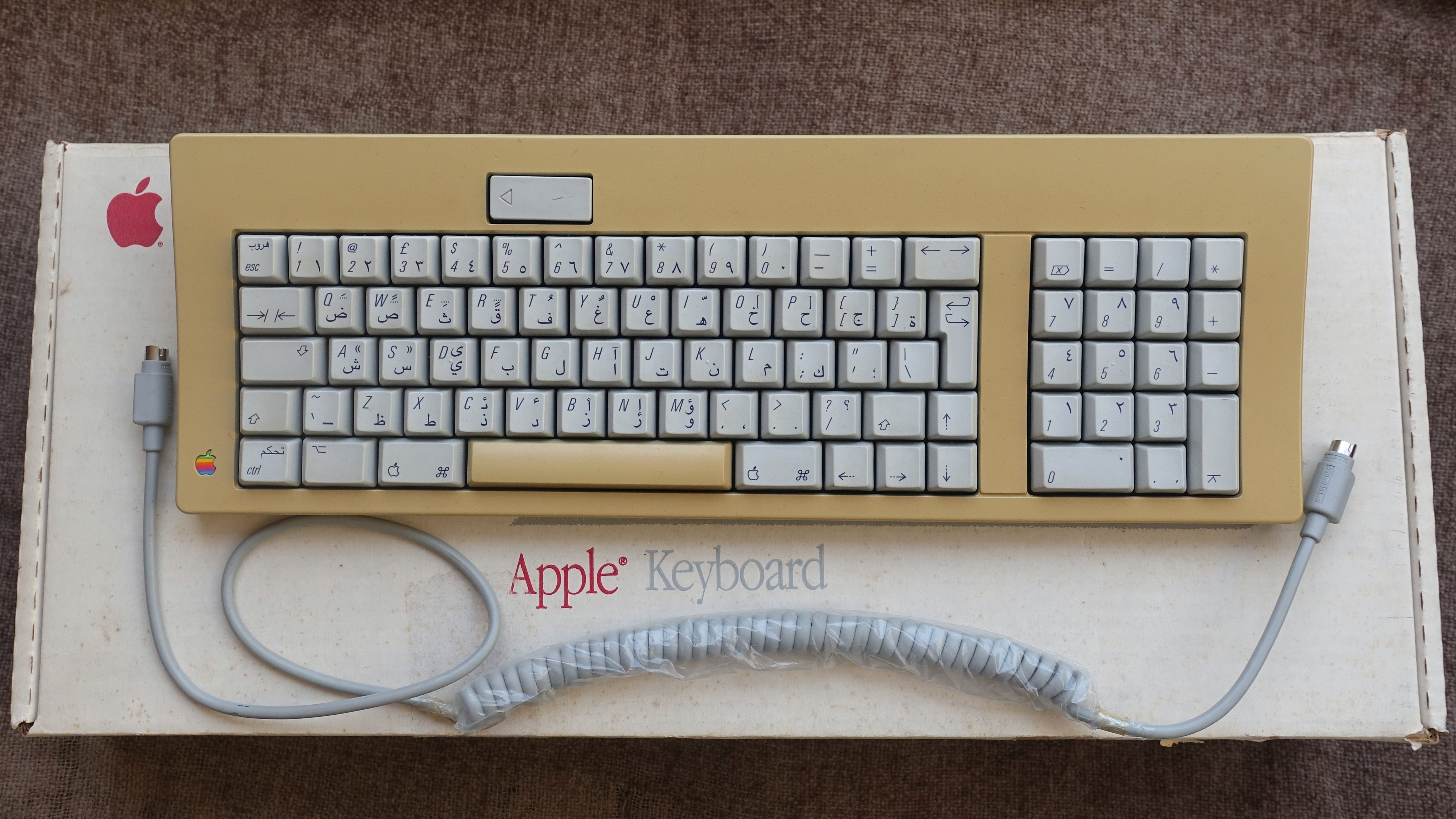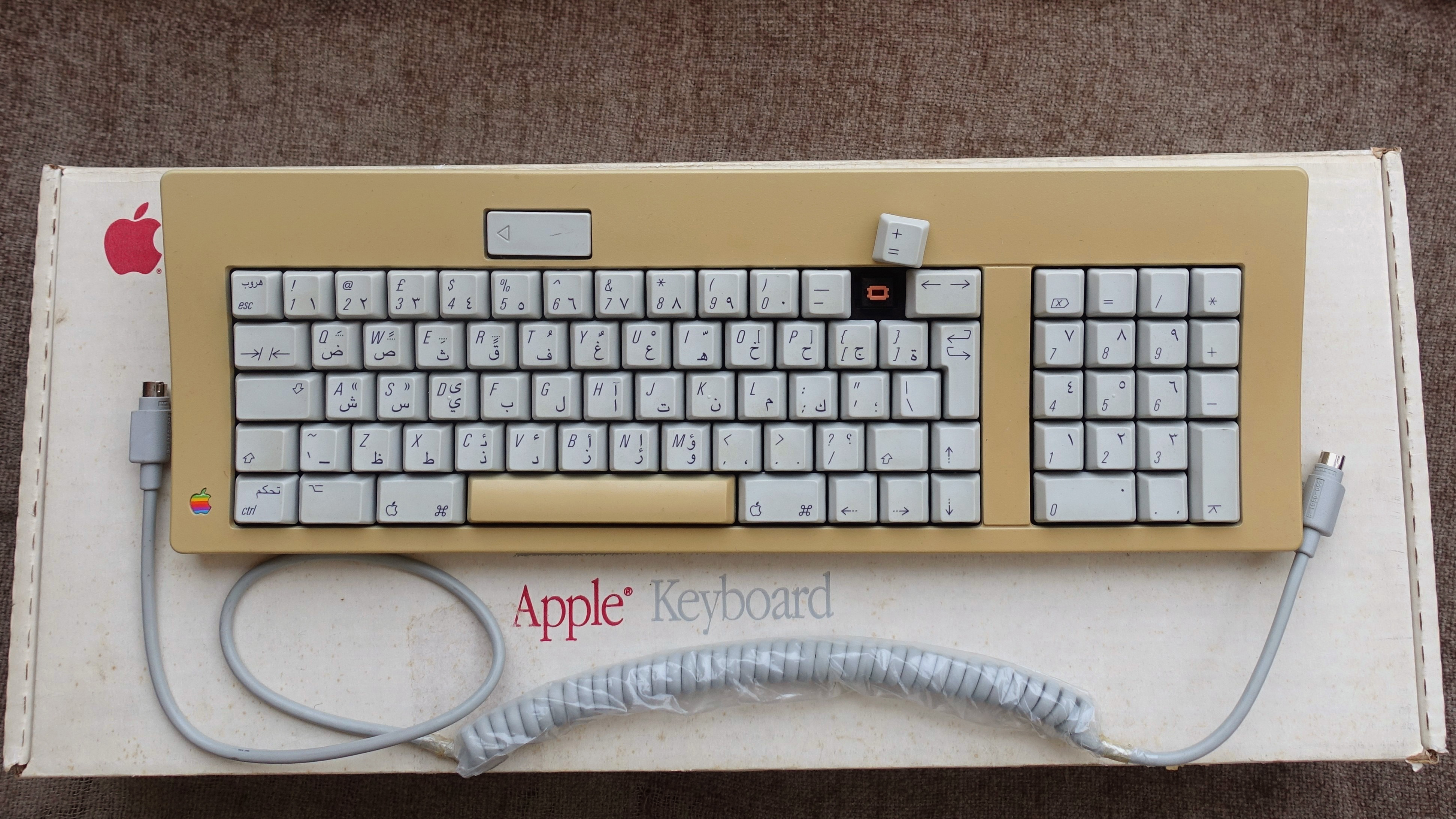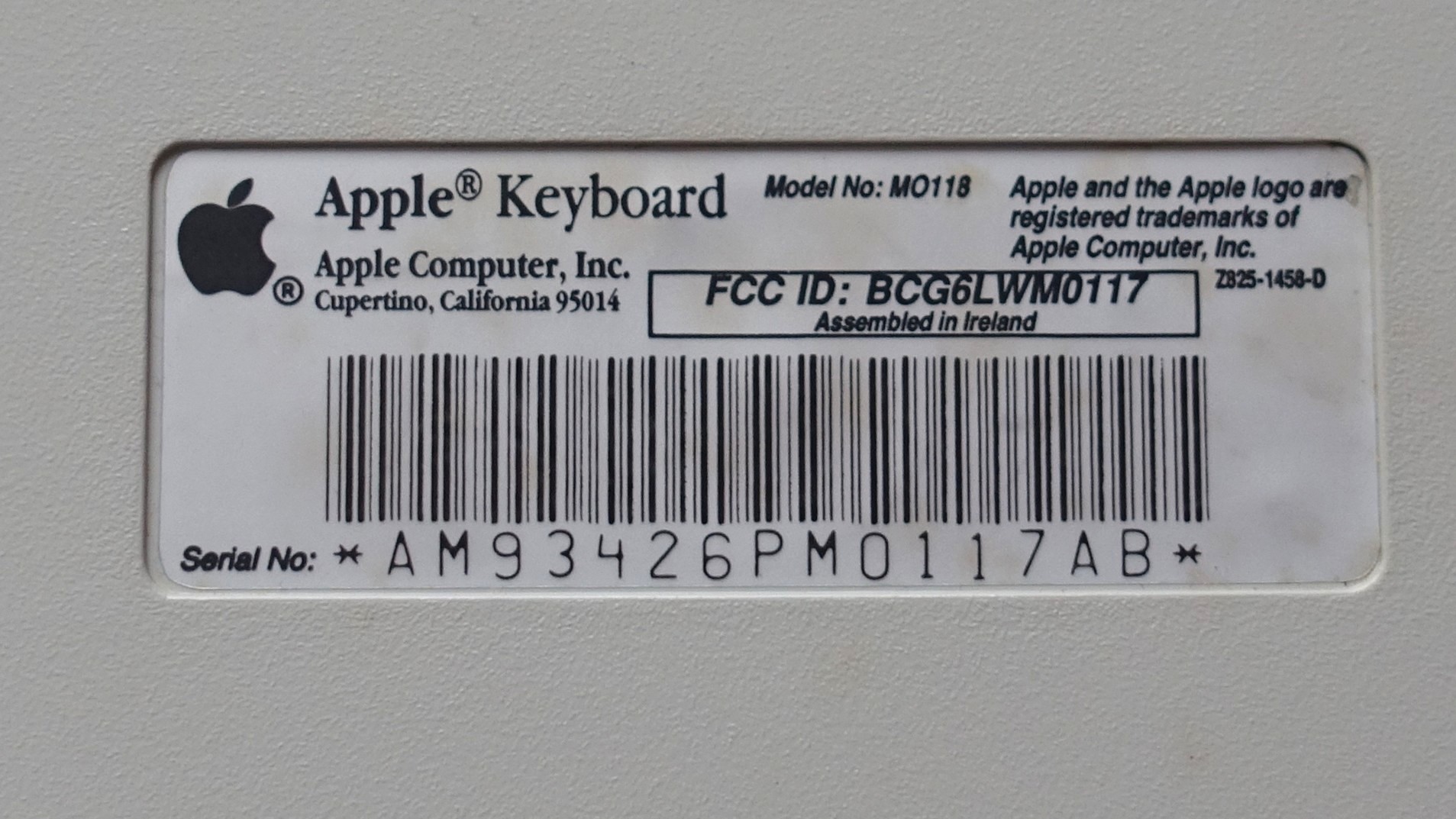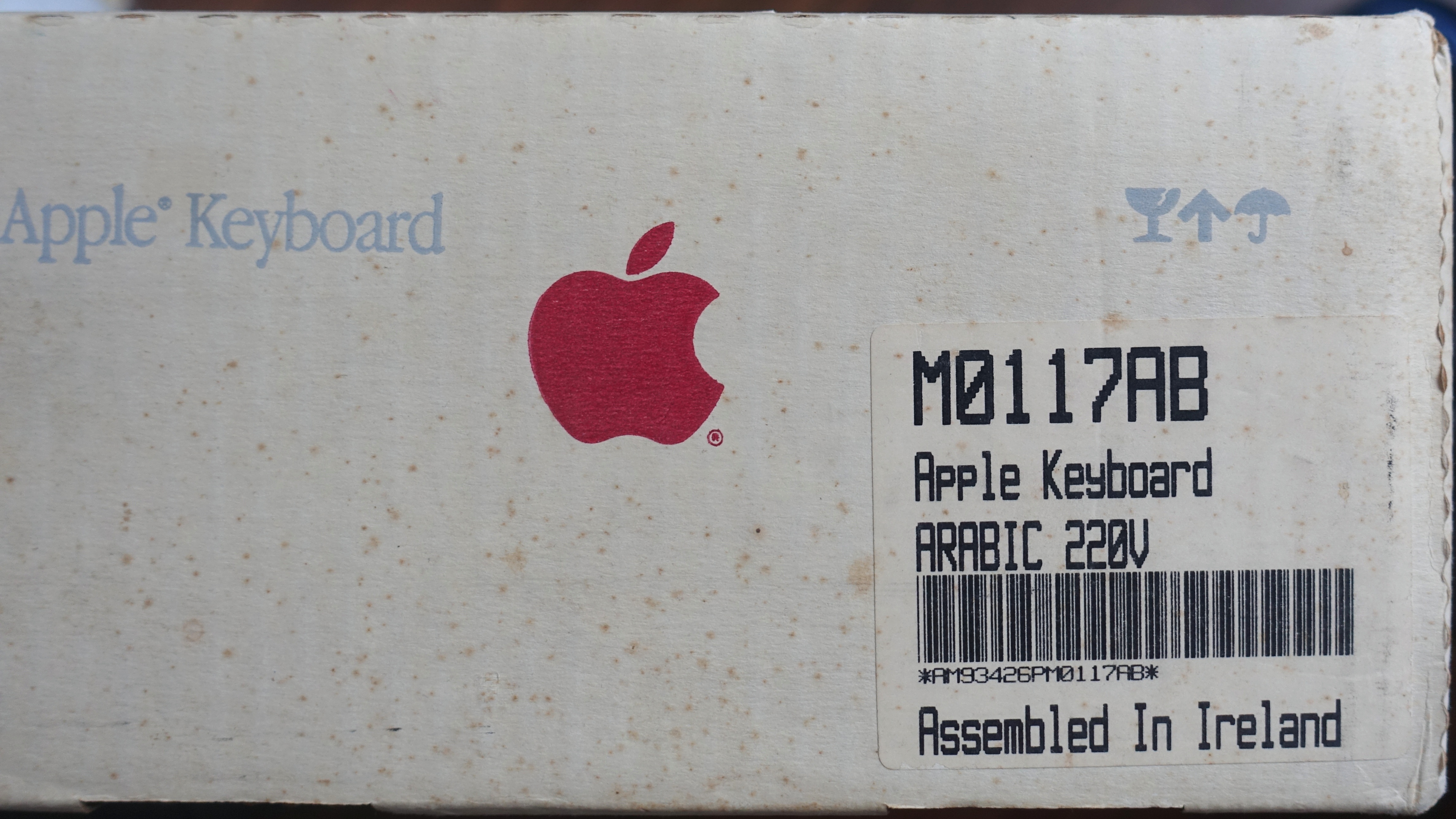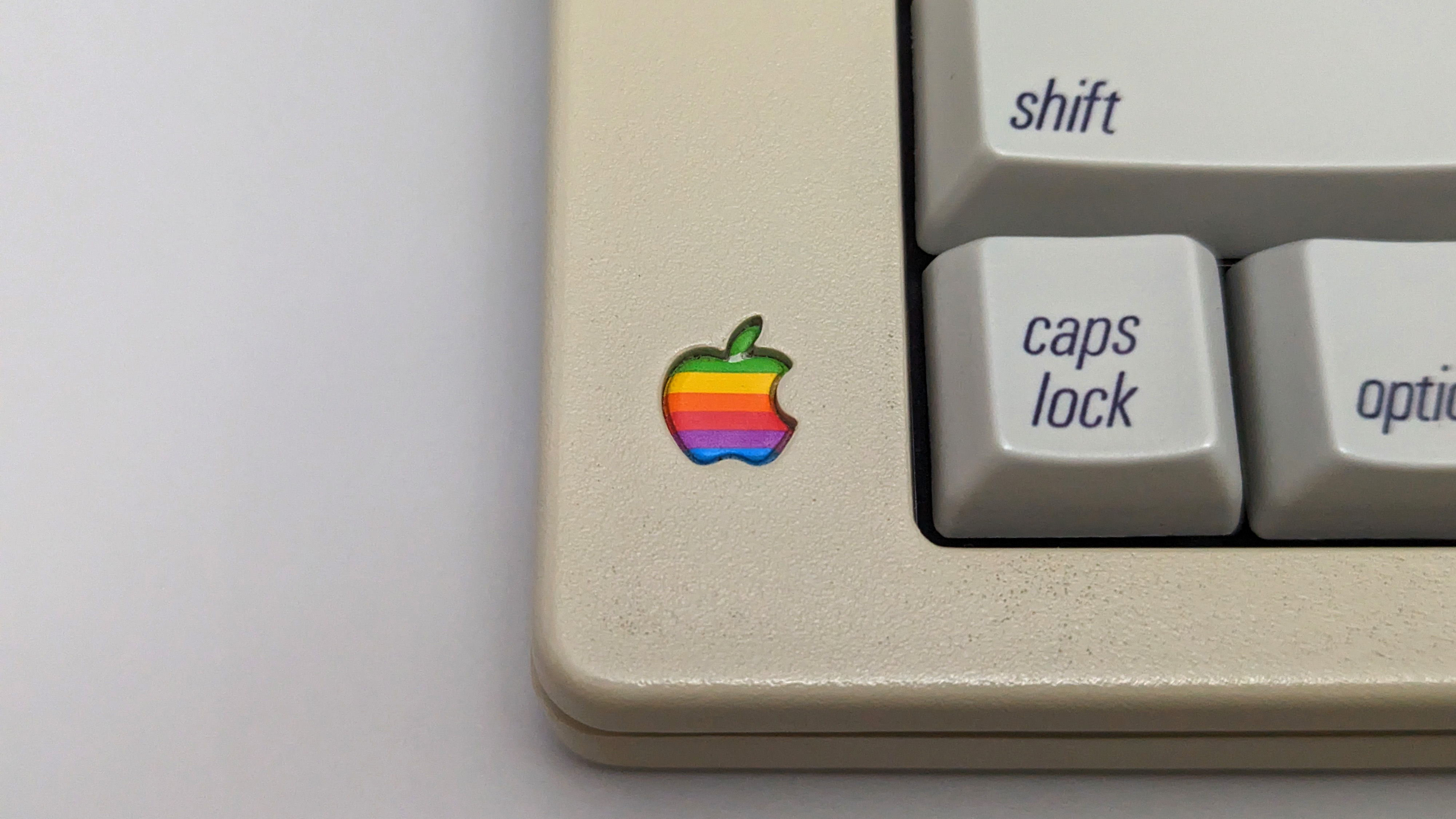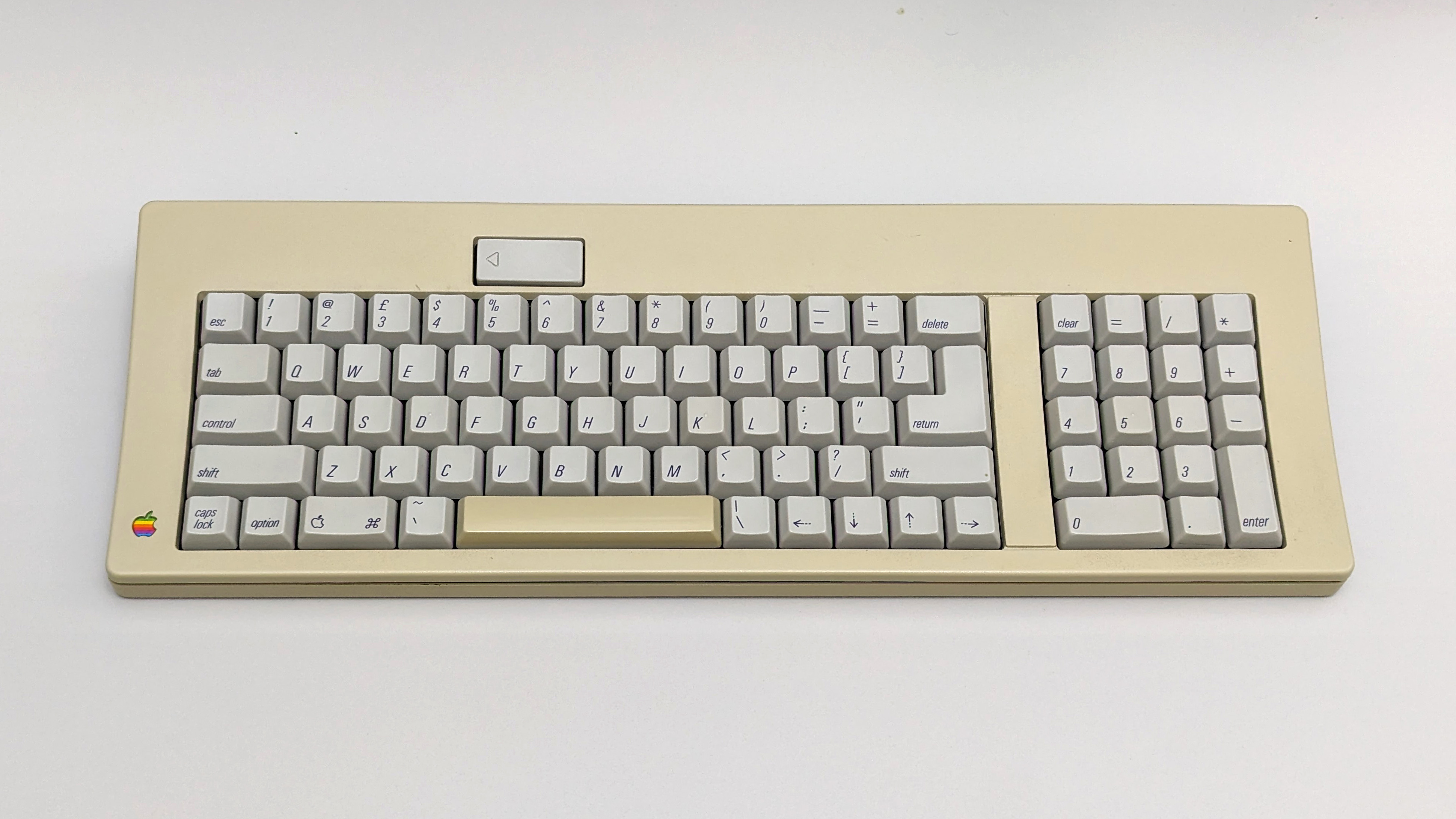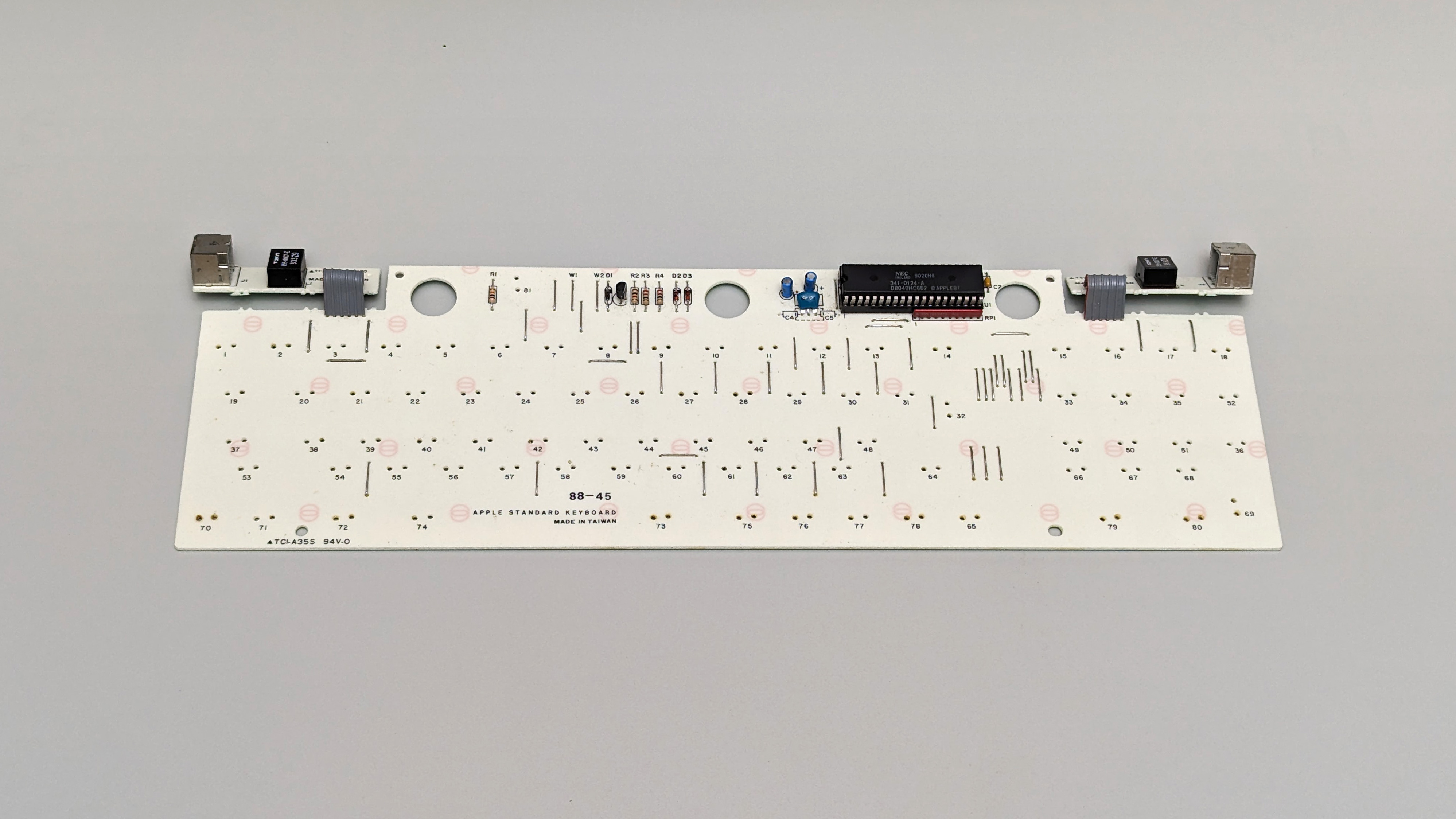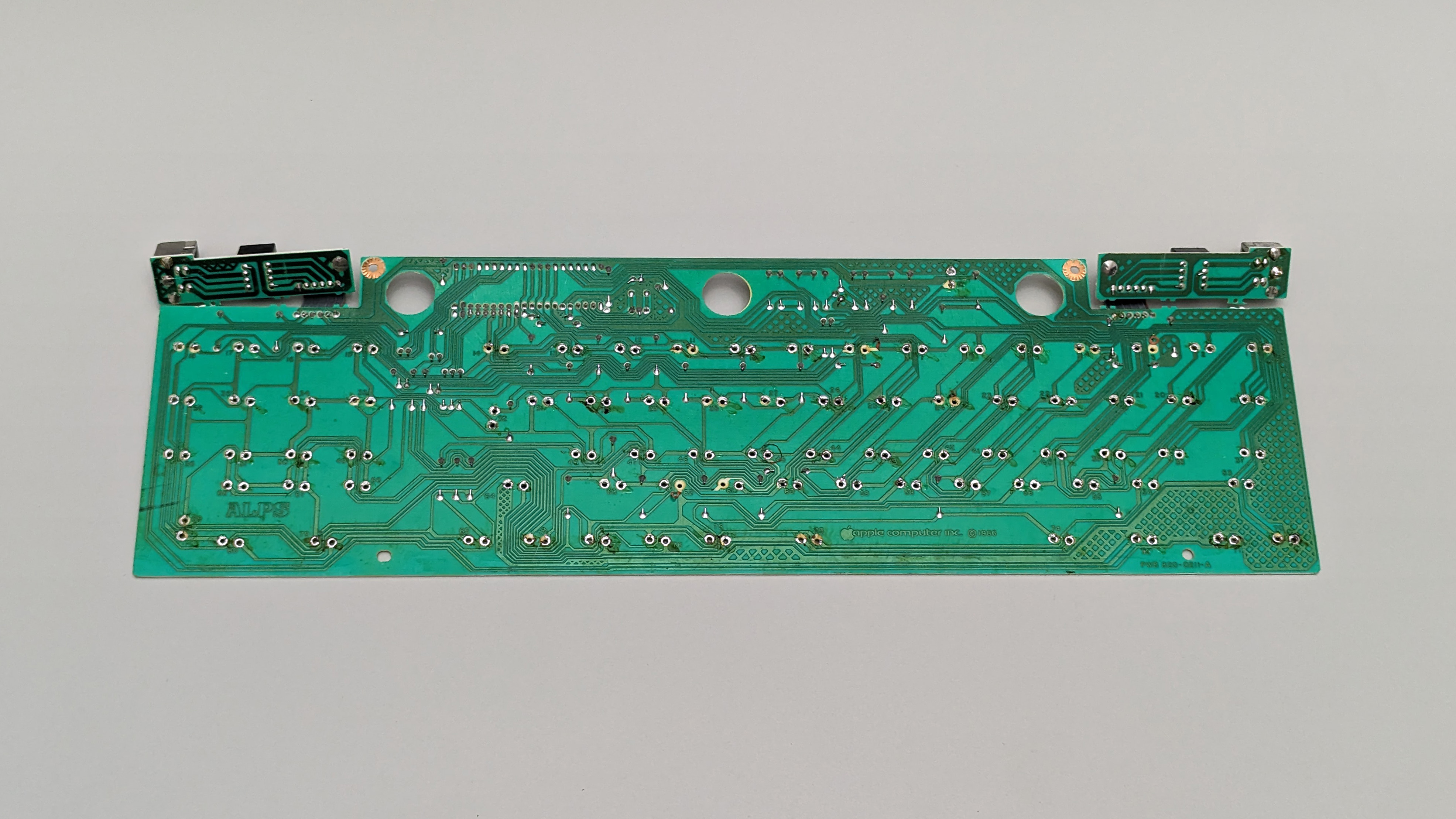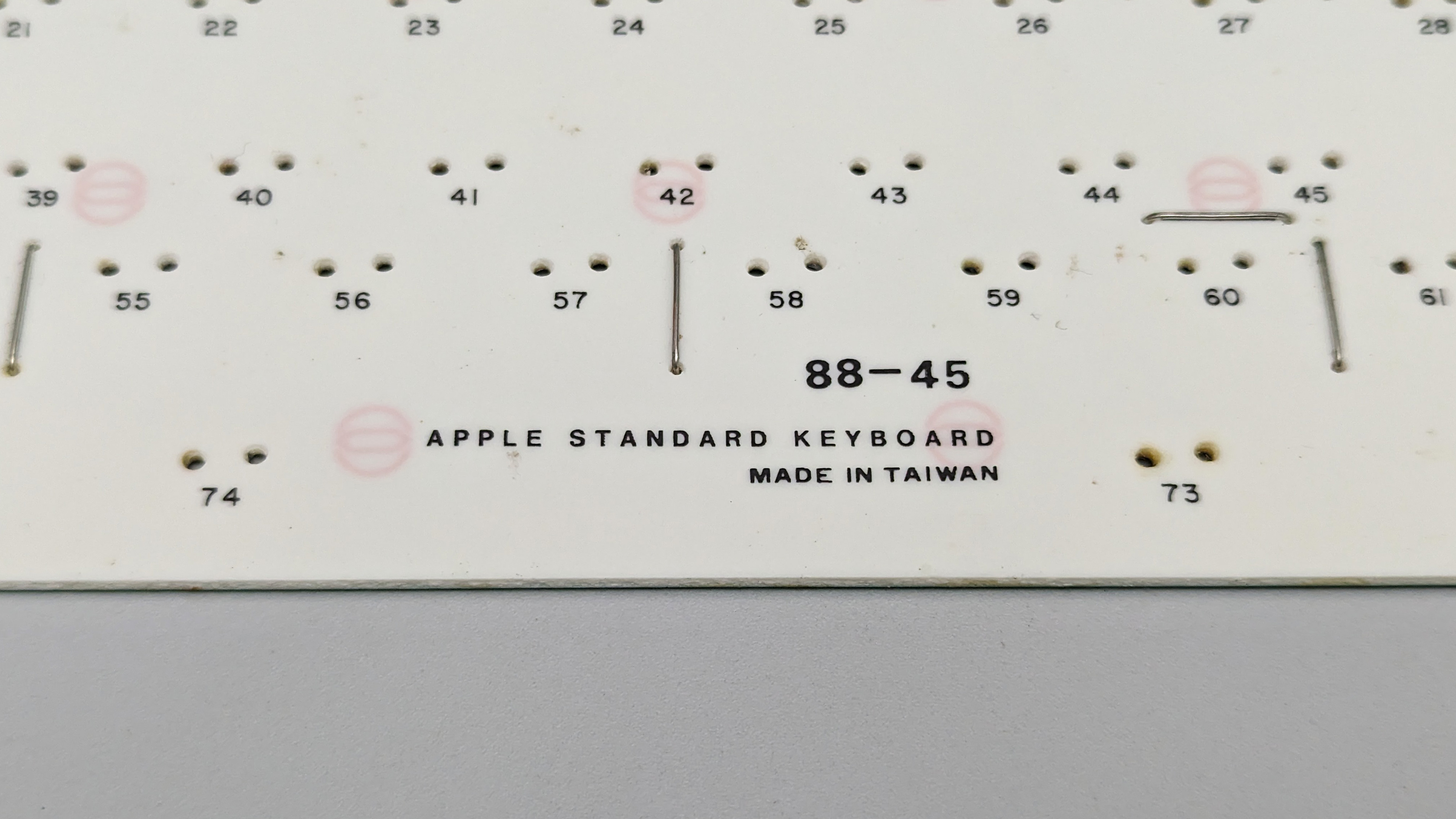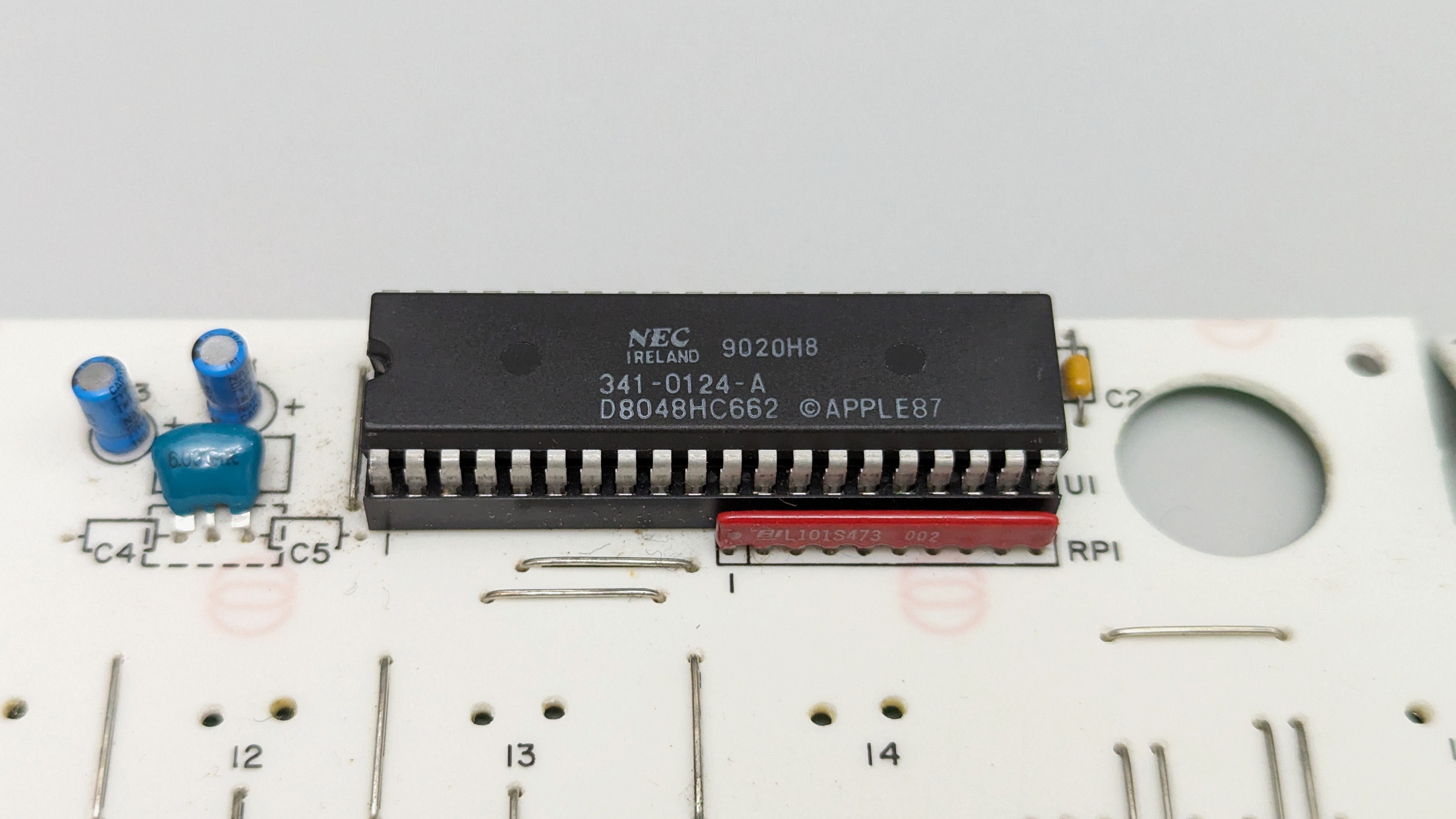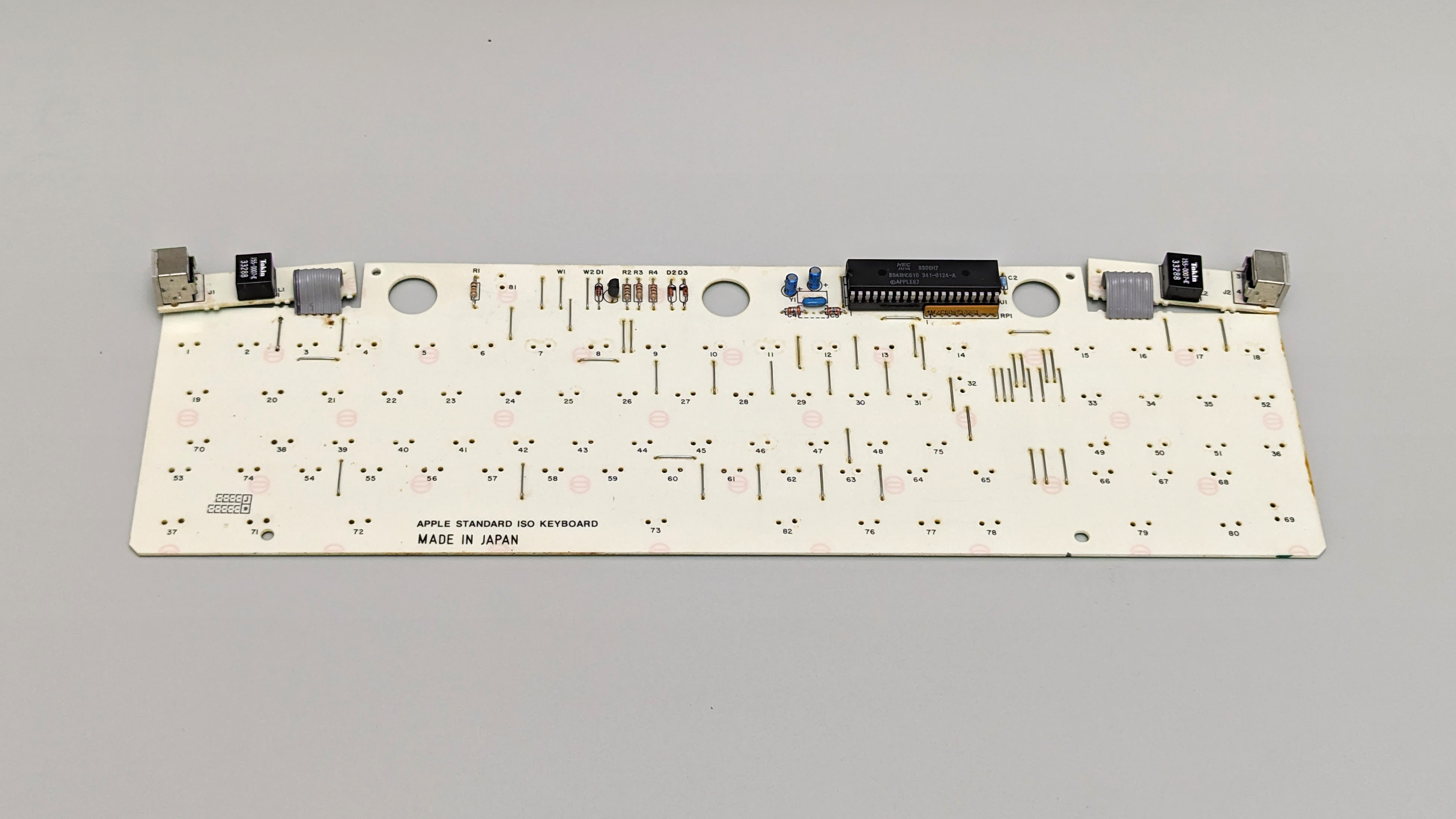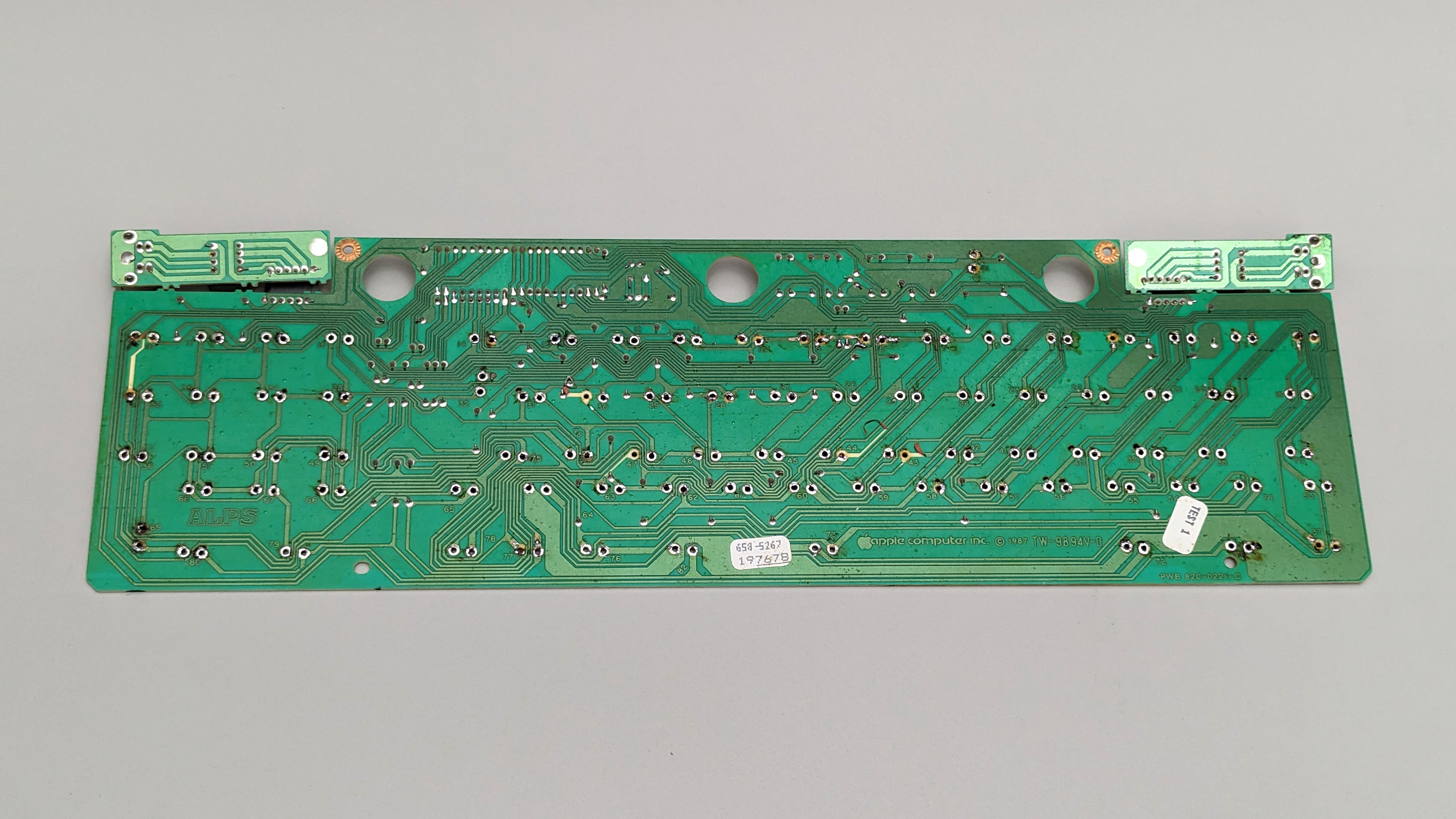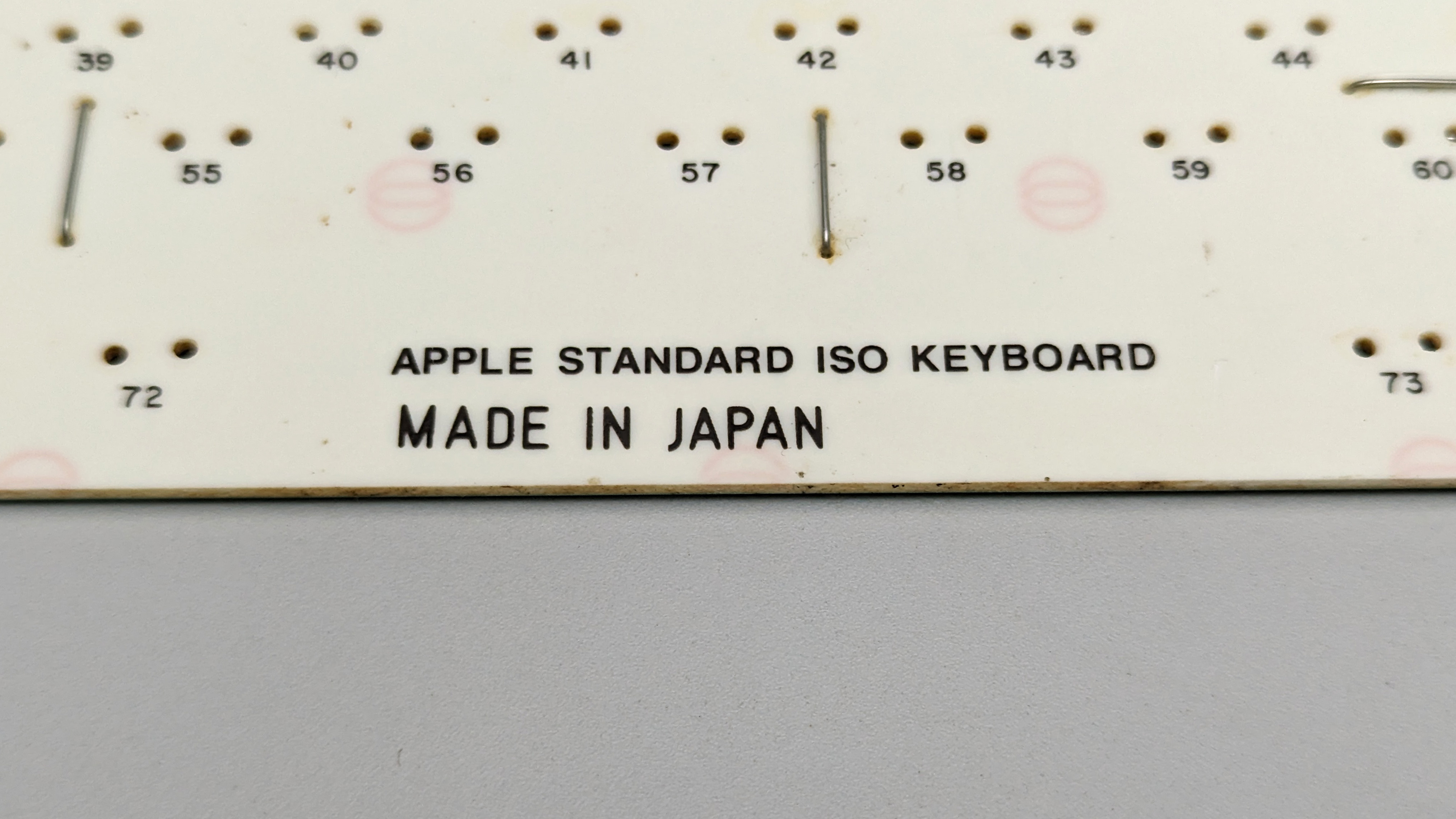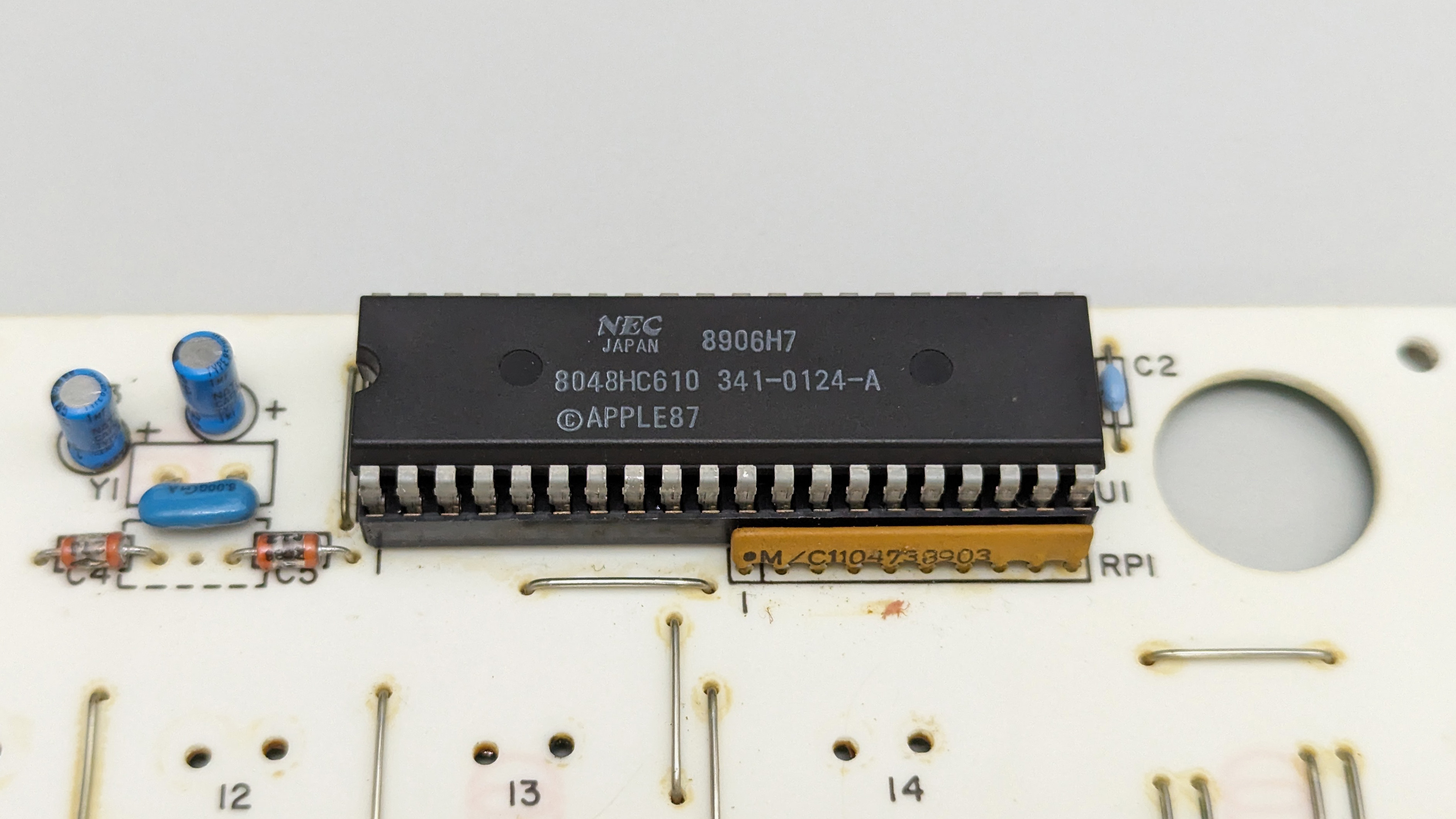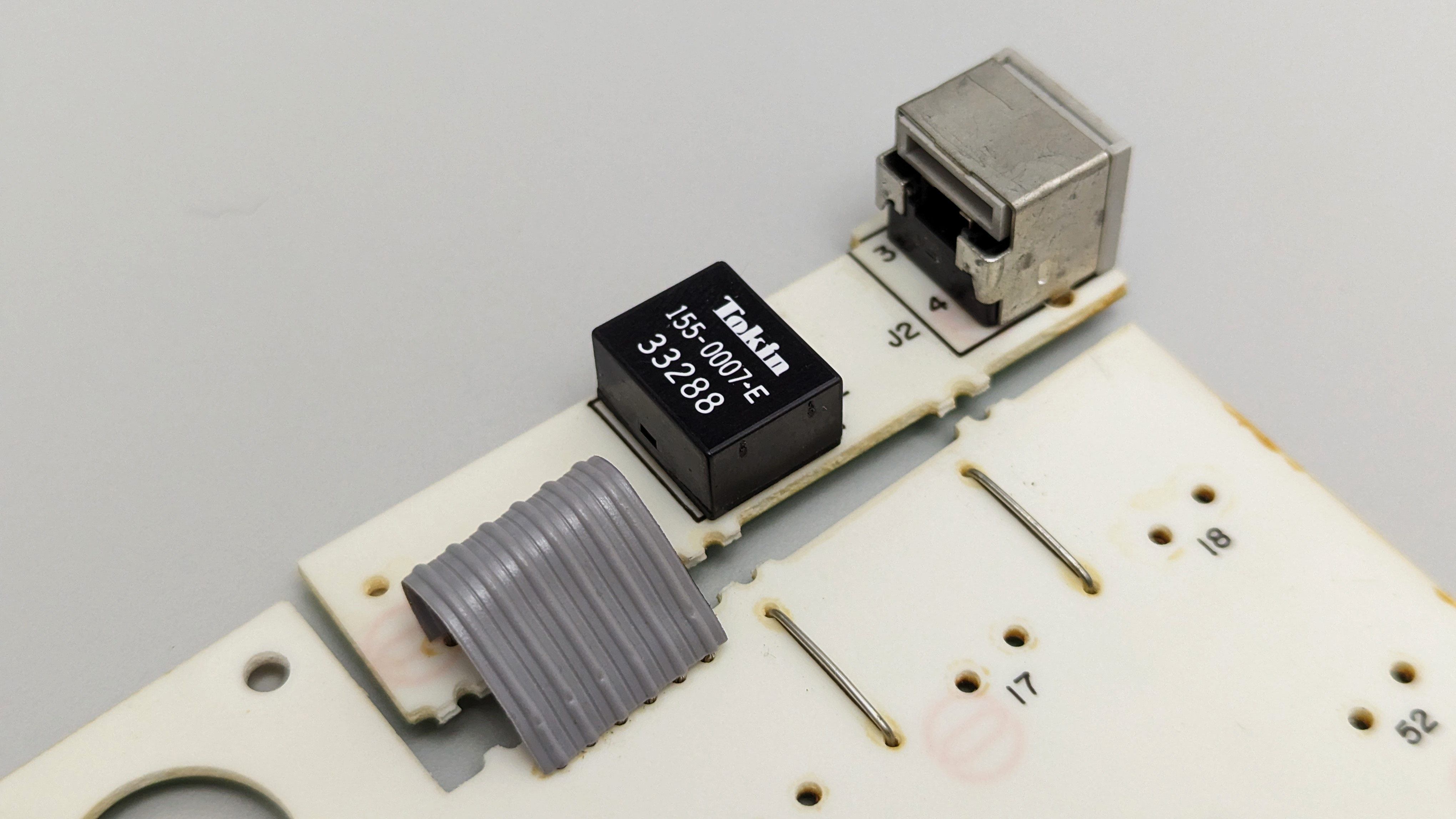This is an old revision of the document!
Apple Standard Keyboard
| Apple Standard Keyboard | |
 |
|
| Switch | Alps SKCM Orange Alps SKCM Salmon Alps SKCL Lock |
| Sense method | Metal contact |
| Protocol | ADB |
| Keycaps | Dye-sub PBT |
The Apple Standard Keyboard was introduced by Apple in 1987 alongside the Macintosh II and Macintosh SE computers. The example in the infobox, an M0116, was manufactured in 1990 in Ireland.
Description
The Apple Standard Keyboard shares a lot of traits with the Apple Extended Keyboard, which served as the full-size alternative during their years of production. Although both keyboards were introduced simultaneously, the Apple Standard Keyboard was advertised as the more affordable option at $129.1)
Known variants include:
- M0116 - a variant with an ANSI-like layout and a convoluted bottom-row. All modifiers are labeled in English.
- M0117 - a variant with an ISO-like layout and a simplified bottom-row. Most modifiers are labeled with an icon.
Presently, the widely-adopted terminology for the Apple Standard Keyboard is often the “M0116”.
Construction
Case & Internals
The Apple Standard Keyboard is easily identified by its unique compact aesthetic, recognized by its simple swooping shape along with a “ridged” appearance on the sides of the bottom case. The case is made entirely in ABS plastic with an average thickness of 3.4mm2), making it a fairly sturdy chassis, but it's worth mentioning that the corners are still susceptible to cracks and chips. Additionally, the ABS plastics used in Apple keyboards of this era had a tendency to yellow more rapidly than those found in other keyboards.
The case is divided into two halves, a top and bottom-case, as well as the internal assembly. The top-case is secured by 3 screws positioned at the back, along with 4 plastic clips underneath the lip.
Regarding serviceability, the entire keyboard can easily be disassembled, but newcomers may encounter some confusion during reassembly. The steel mounting plate must first slide into the 4 thin slits at the lip of the bottom-case before the upper-case can be fully closed. The photos below demonstrate the following:
Measuring at 1.2mm3) in thickness, the steel mounting plate is relatively average and doesn't possess any notable characteristics.
Switches
The Apple Standard Keyboard came equipped with either Alps SKCM Orange or its successor, the Alps SKCM Salmon.
The Caps Lock key is always replaced by an Alps SKCL Lock switch. However, the position of the Caps Lock key can vary between the M0116 and M0118 variants.
Keycaps
The keycaps, made primarily from PBT plastic, feature an oblique dye-sublimated fontface, excluding the spacebar which was made in ABS plastic. These keycaps boast a unique profile exclusive to Apple keyboards of that era. Peculiarly, the thickness of these keycaps is non-uniform, with all sides measuring at 1mm, except for the rear wall, which is slightly thicker at 1.5mm.
When paired with the thick all-plastic case, these keycaps contribute to a sound signature that is generally perceived as pleasant.
Additional Information
Hard-2KRO Limitation
In the majority of 2KRO keyboards, the user is free to press as many keys until a conflicting key in the matrix is pressed. As a result, most 2KRO keyboards have the potential to register more than two simultaneous key presses, with only certain combos blocked.
However, common at the time for Apple keyboards, the Apple Standard Keyboard came with a strict limitation of only 2 simultaneous key-presses, regardless of the respective keys' position in the matrix. This is likely done in the keyboard's factory firmware, as the Apple Standard Keyboard's matrix is observed to be capable of normal 2KRO behavior.
This makes the Apple Standard Keyboard rather unsuitable for tasks which may require complex key-combos, such as with gaming.
Layout-specific Serial Numbers
The following table depicts all recorded serial numbers, categorized based on their corresponding layouts.
| Serial No. | Layout | Description |
| M0116 | English (US) | Standard layout. |
| M0116B | English (UK) | Similar to US layout, but has £ symbol.4) |
| M0117Z | English | English M0117 layout.5) |
| M0117AB | Arabic | Arabic M0117 layout.6) |
| M0117D | German | German M0117 layout.7) |
| M0117F | French | French M0117 layout.8) |
| M0117HB | Hebrew | Hebrew M0117 layout.9) |
| M0117S | Finnish Swedish | Finnish/Swedish M0117 layout.10) |
| M0117SF | Swiss | Swiss M0117 layout.11) |
| M0117Y | Spanish | Spanish M0117 layout.12) |
| M0117YU | Yugoslavian | Yugoslavian M0117 layout.13) |
Gallery
Apple Standard Keyboard (M0116, US)
Apple Standard Keyboard (M0117HB, Hebrew)
Apple Standard Keyboard (M0117AB, Arabic)
Apple Standard Keyboard (M0116B, UK)
- Dated 1990, Week 2015)
- FCC ID: BCG6LWM0116
- Serial Number: AM0241HYM0116B
Note: Arrow keys were swapped around.
Apple Standard Keyboard (M0117D, German)
- Dated 1989, Week 616)
- Missing FCC ID
- Serial Number: AM92007JM0117D
